30 Abandoned Hotels That Are Frozen in Time
The world is dotted with the ghostly shells of luxury—hotels that once brimmed with life, laughter, and lavish indulgence, now left to crumble in eerie silence. These forgotten landmarks were once glamorous escapes for the wealthy, architectural marvels built to impress and indulge. But when fortune faded or disaster struck, the guests vanished—and time crept in. Now, ballrooms sit in silence, velvet curtains rot in the breeze, and ivy claws its way through cracked tile and broken windows. What began as a list of 12 vanished vacation spots quickly grew—each location more captivating than the last. We couldn’t stop at 22. So we’ve expanded the list to 30 abandoned hotels, each with its own story of splendor lost and nature reclaimed. From seaside resorts swallowed by sand to mountaintop lodges weathered by snow and silence, these breathtaking ruins offer a haunting look at what’s left behind when paradise fades. Ready to check in?
1. Hotel del Salto – Colombia
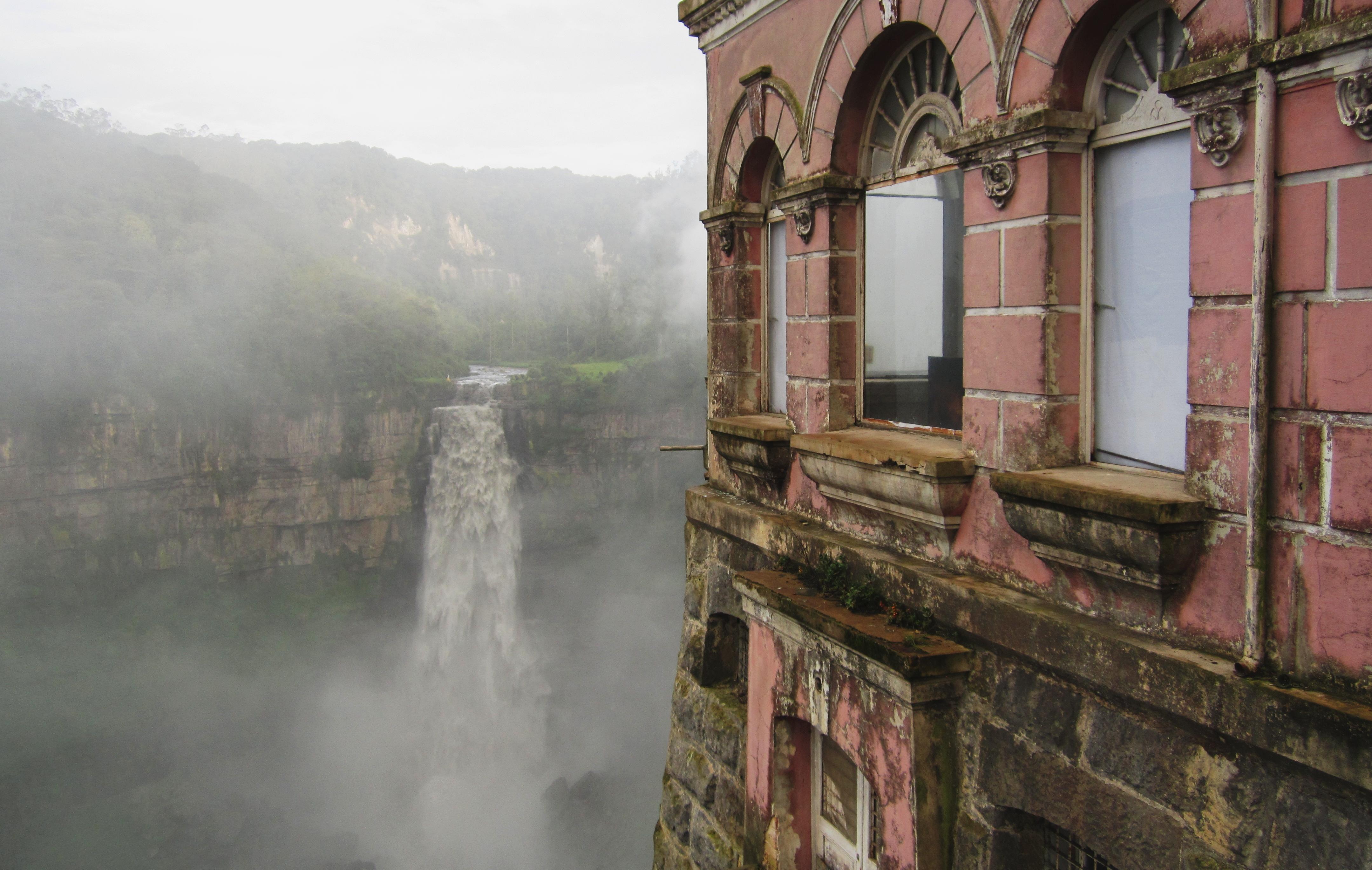
Perched on the edge of a cliff overlooking the stunning Tequendama Falls, Hotel del Salto was once a luxurious retreat for Bogotá’s elite. Opened in 1928, the hotel catered to visitors eager to witness the majestic waterfall. However, pollution in the river and economic troubles led to its closure in the 1990s. Now, it stands abandoned, its once-grand façade covered in moss, while mist from the falls shrouds its eerie silhouette. Though it has been partially restored as a museum, much of the hotel remains a haunting time capsule of Colombia’s golden age of travel.
2.Haludovo Palace Hotel – Croatia
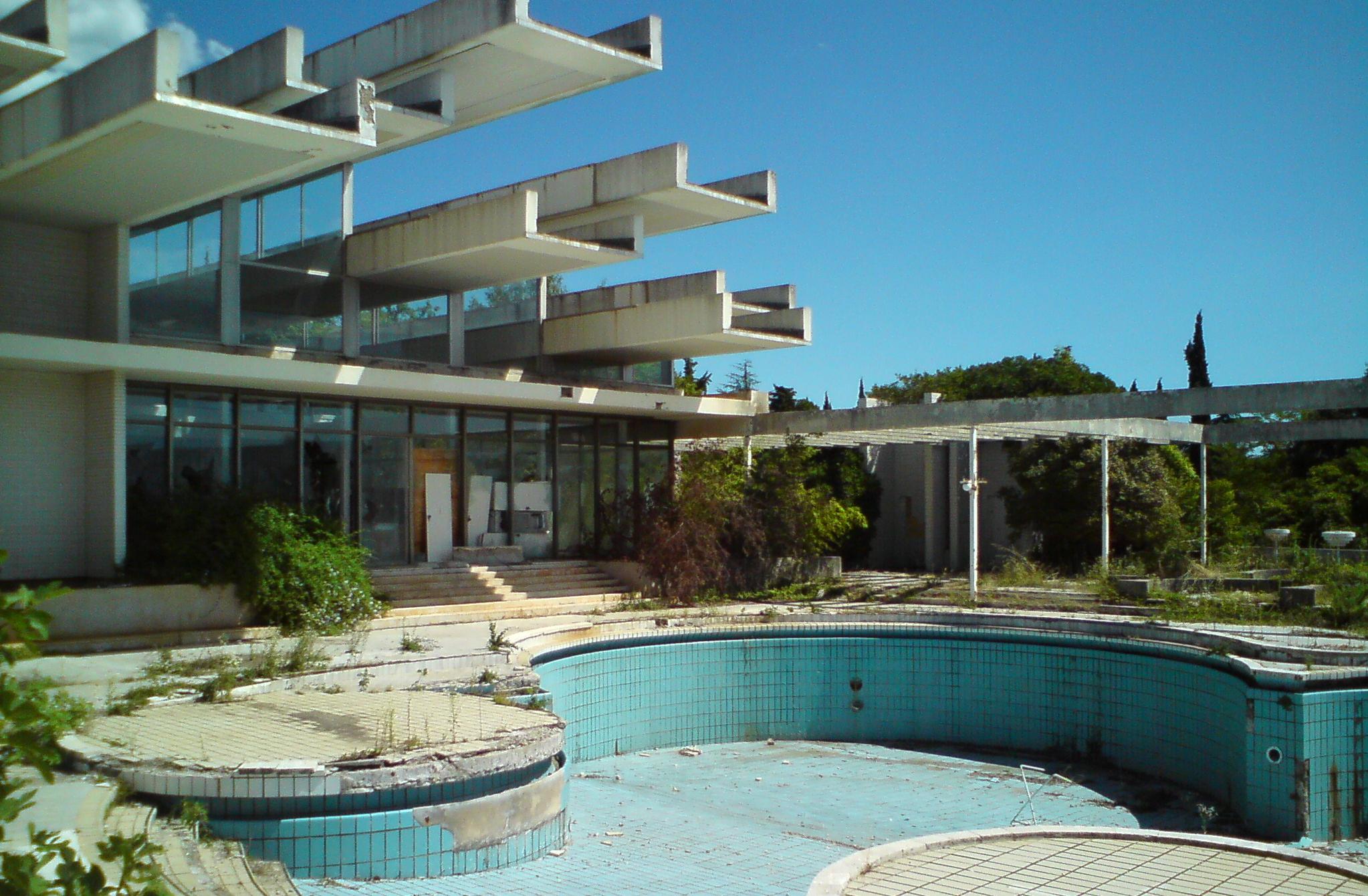
Built in the 1970s on the Croatian island of Krk, Haludovo Palace Hotel was a surreal mix of Communist-era architecture and Las Vegas-style indulgence, once bankrolled by a wealthy American casino mogul. At its peak, it attracted rich vacationers, offering lavish pools and extravagant parties. However, it soon fell into financial ruin and was abandoned after the Yugoslav Wars. Today, nature is reclaiming the sprawling complex—wild vines drape over crumbling walls, while shattered windows reveal glimpses of its decayed opulence.
3.Hachijo Royal Hotel – Japan
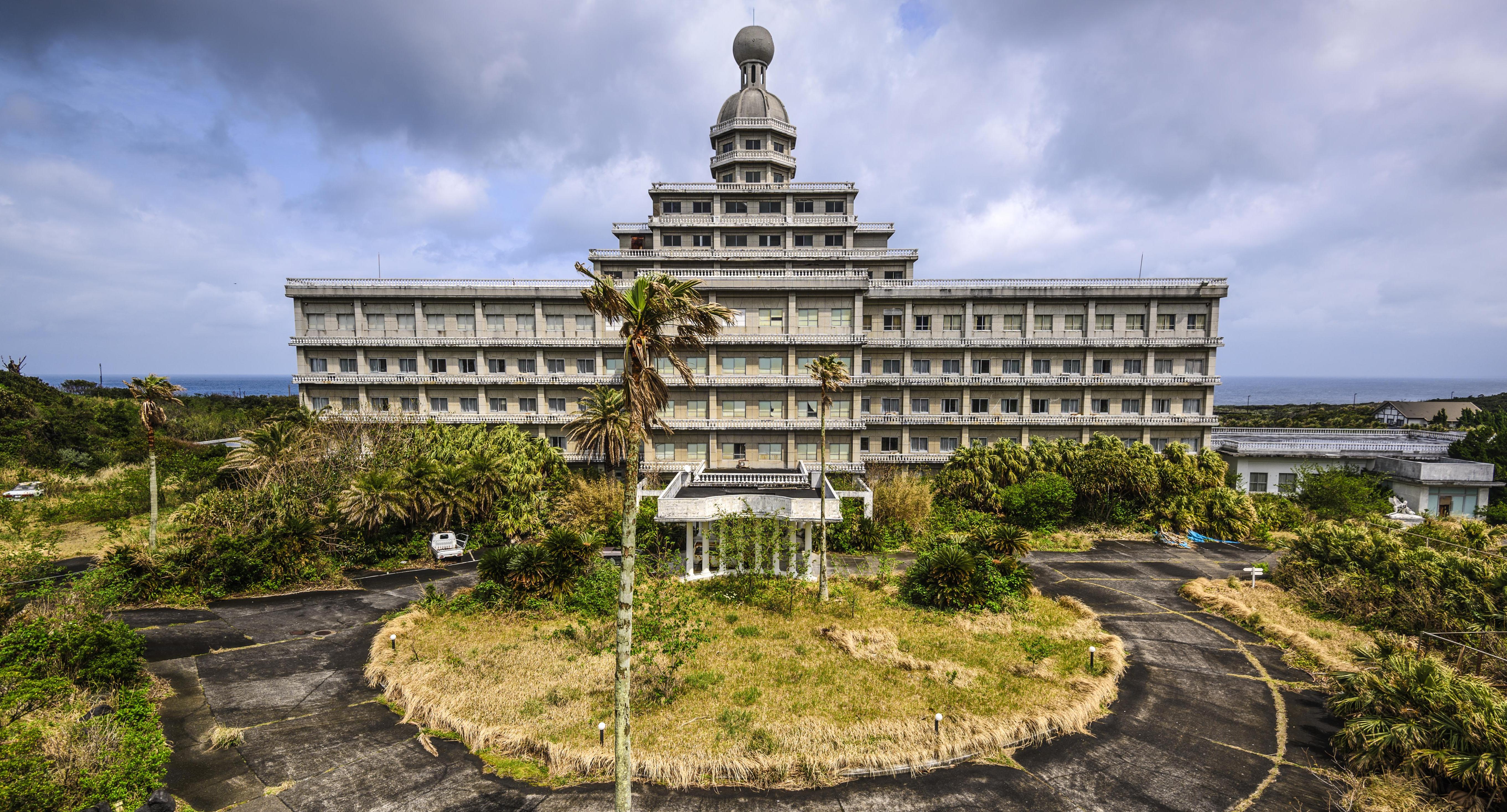
Once one of Japan’s largest luxury resorts, the Hachijo Royal Hotel opened in the 1960s on Hachijojima Island, designed as a tropical getaway for affluent travelers. Styled after French palaces, its golden days were short-lived as Japan’s economic boom led to more exotic travel destinations. The hotel was shuttered in the early 2000s, and since then, lush jungle vines have consumed its sprawling courtyards. The eerie, untouched interiors still house faded murals and furniture left behind, as if the guests simply vanished overnight.
4.Ponce Intercontinental Hotel – Puerto Rico
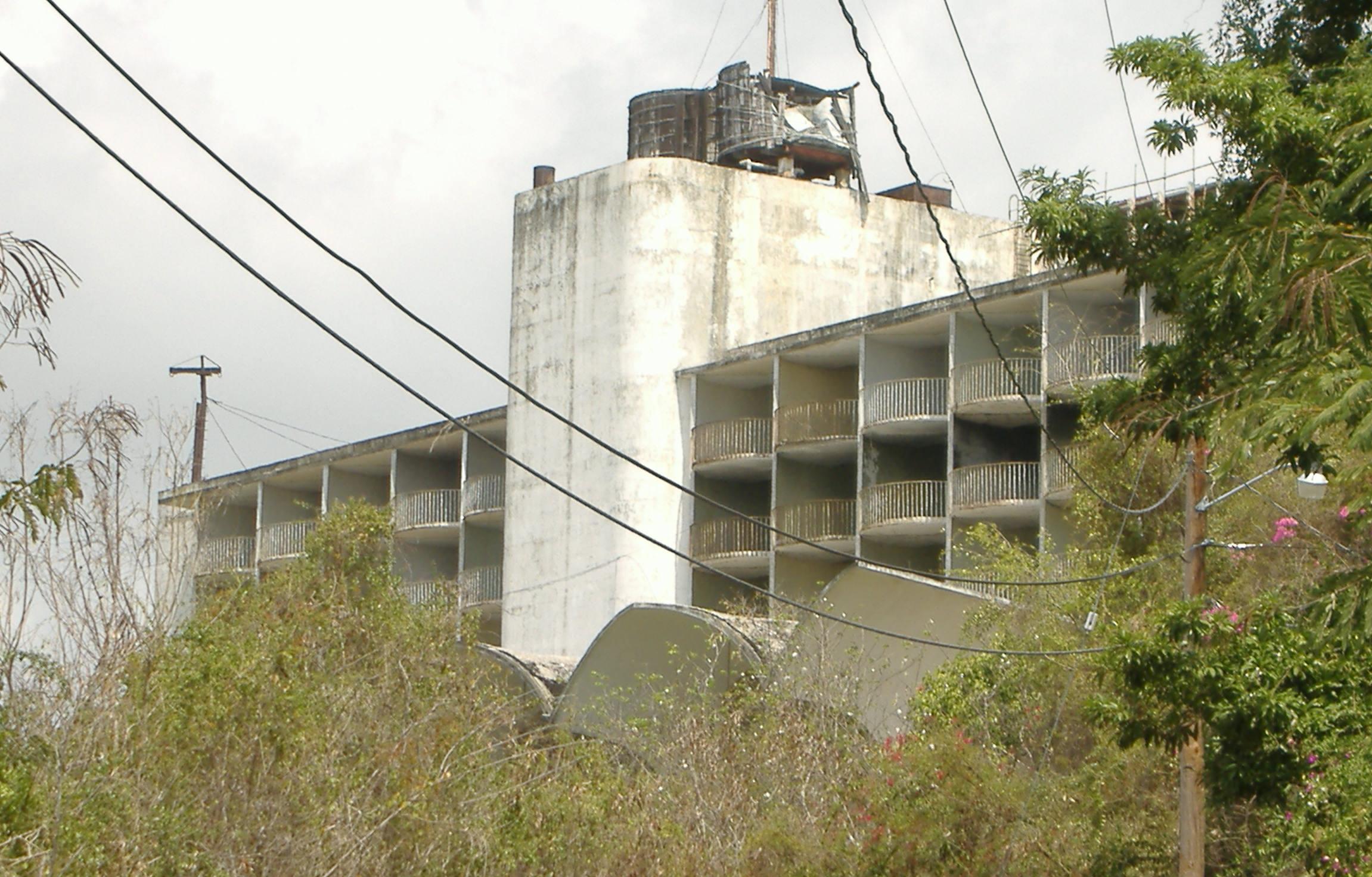
Built in the 1960s with hopes of transforming Ponce into a world-class destination, the Ponce Intercontinental Hotel was an architectural marvel of its time. However, a series of hurricanes and economic downturns led to its eventual abandonment. Now, towering palm trees have overtaken its walkways, and the once-blue pools are now murky swamps teeming with wildlife. The abandoned halls whisper of the resort’s fleeting glamour, while nature weaves itself into the fabric of its demise.
5.Ghost Palace Hotel – Bali, Indonesia
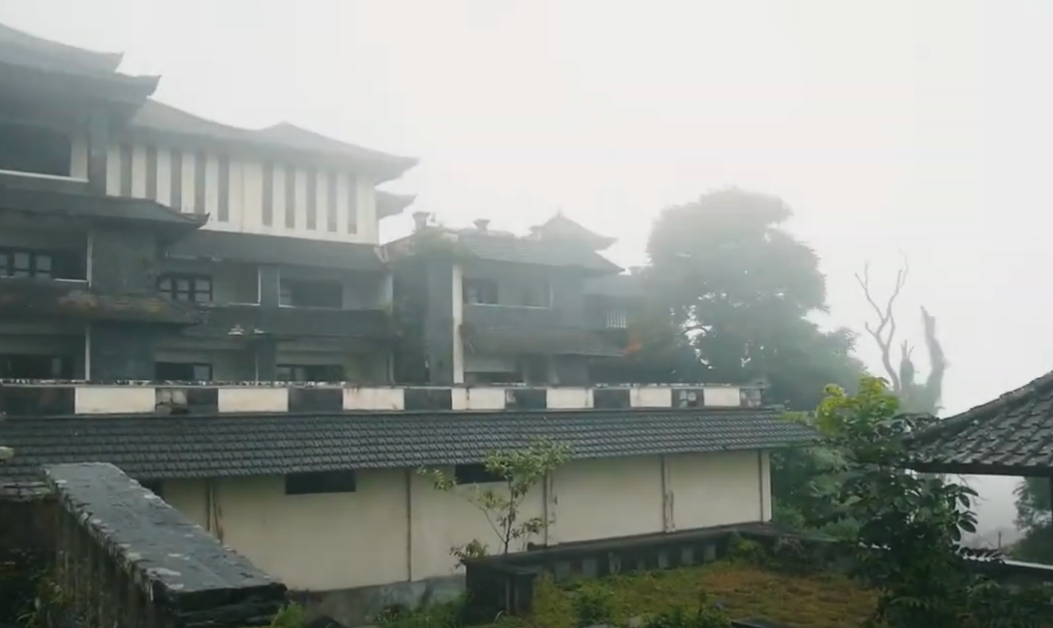
Locals believe the Ghost Palace Hotel, also known as the PI Bedugul Taman Rekreasi Hotel, is cursed. Abandoned before it even opened, this luxurious Balinese resort was allegedly doomed by corruption and supernatural forces. Rumors swirl about ghosts wandering its decayed corridors, while the jungle reclaims its walls and staircases. With moss-covered stone dragons and eerily intact guest rooms, it feels like a forgotten kingdom rather than a failed business venture.
6.Grossinger’s Catskills Resort – USA
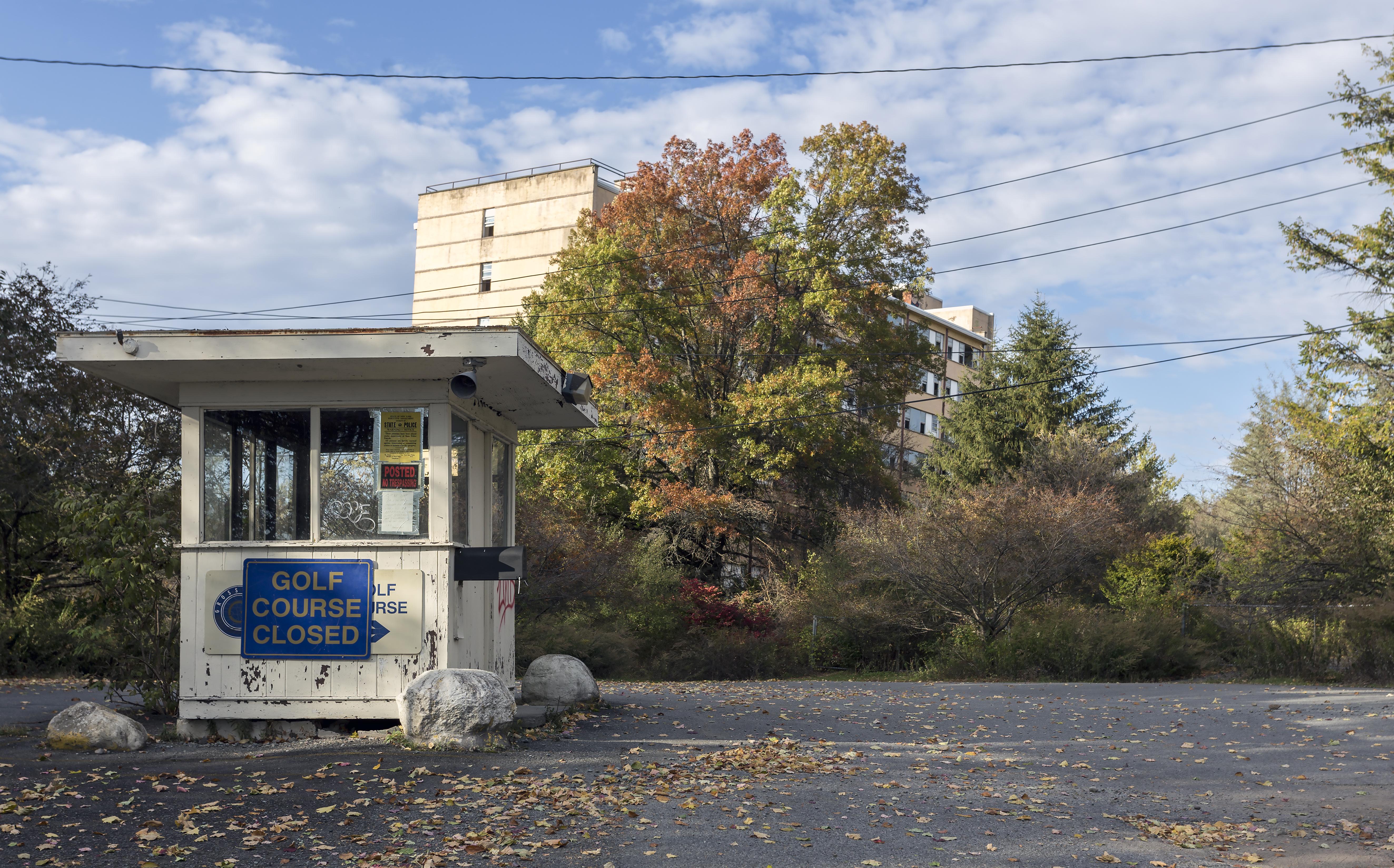
The Catskills were once the go-to retreat for wealthy New Yorkers, and Grossinger’s Resort was the crown jewel. Opened in the early 1900s, it flourished for decades, even inspiring elements of Dirty Dancing. But as travel trends changed, the resort declined, eventually shutting its doors in 1986. Now, the once-luxurious bungalows are overtaken by trees, ivy creeps through grand ballrooms, and its famed swimming pool is a murky relic of a bygone era.
7.Monte Palace Hotel – Azores, Portugal
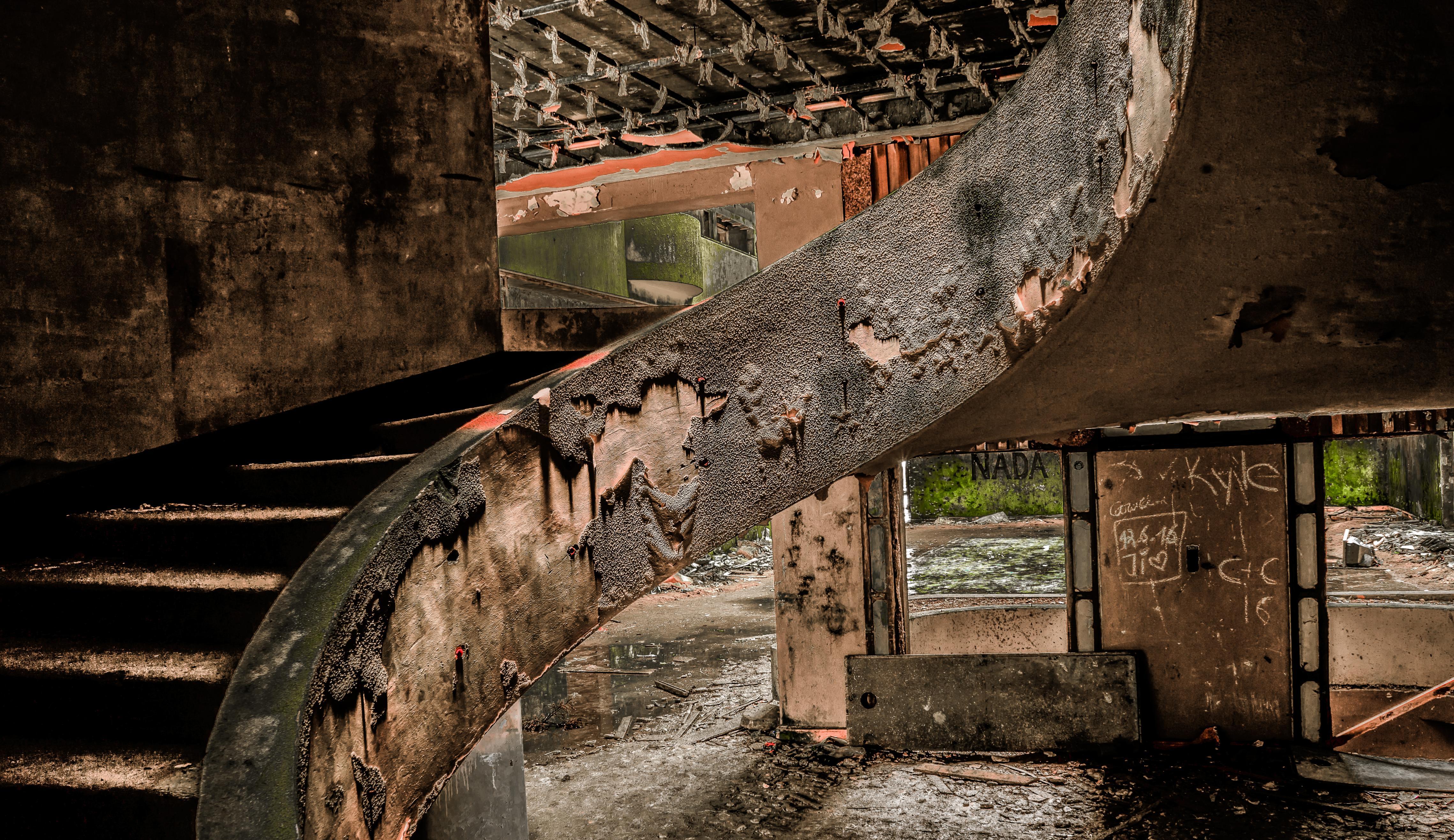
High above Sete Cidades, a stunning volcanic crater lake in the Azores, Monte Palace Hotel was once poised to be a five-star destination. It opened in the 1980s, promising unparalleled luxury, but economic challenges led to its closure just two years later. Now, clouds roll through the open corridors, and lush greenery envelops the building. With its hauntingly beautiful vantage point, the hotel feels like a dreamscape where time stopped.
8.Hotel Eltz – Germany
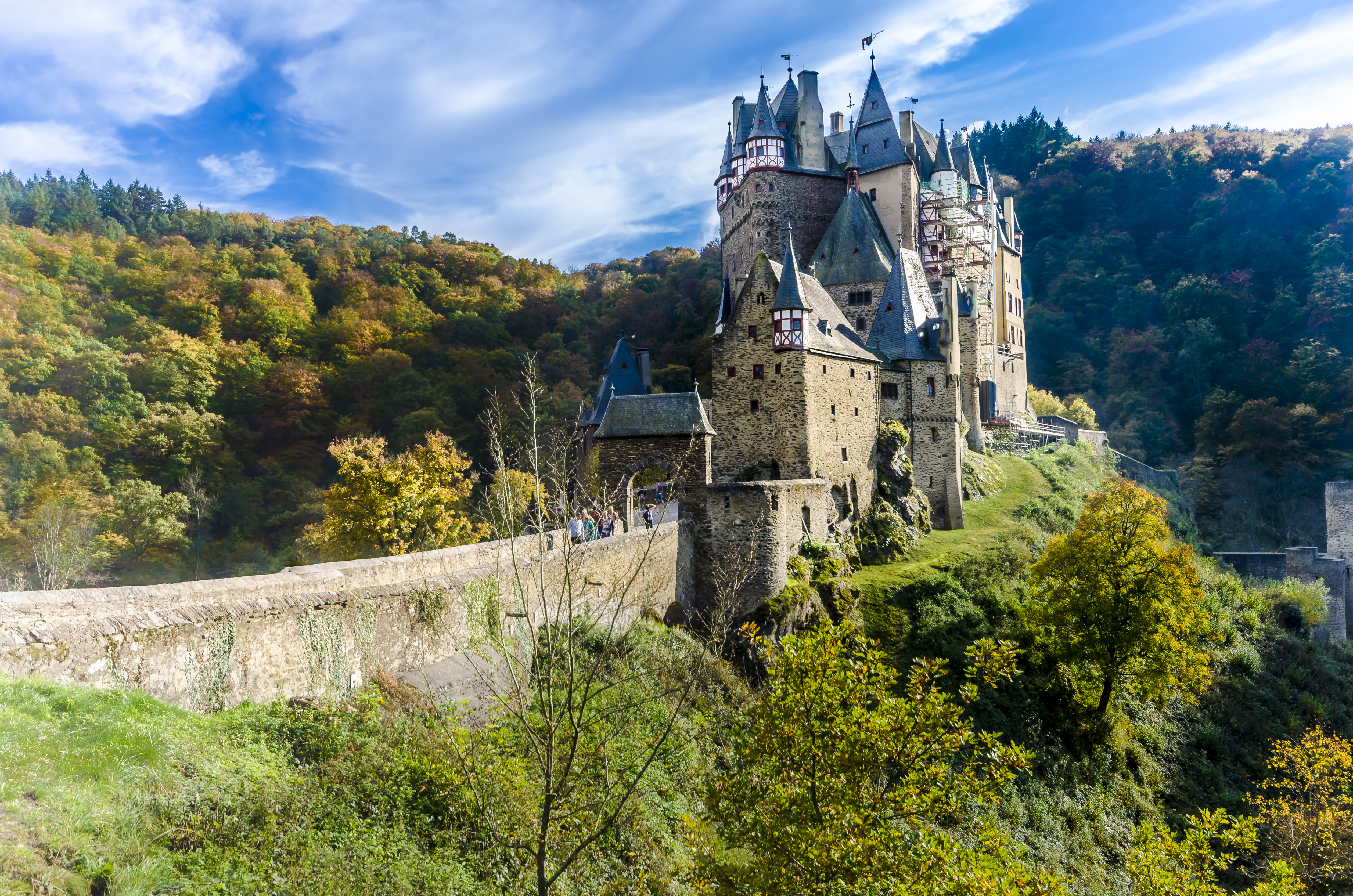
Nestled deep in the forests of Germany, Hotel Eltz was once a charming getaway for hikers and nature lovers. However, after decades of decline, it was abandoned, and the forest wasted no time in reclaiming it. Trees grow through the lobby, and wildflowers bloom in its once-elegant dining rooms. The contrast between nature’s quiet takeover and the remnants of human luxury makes it an enchanting yet eerie sight.
9.Igloo Hotel – Alaska, USA
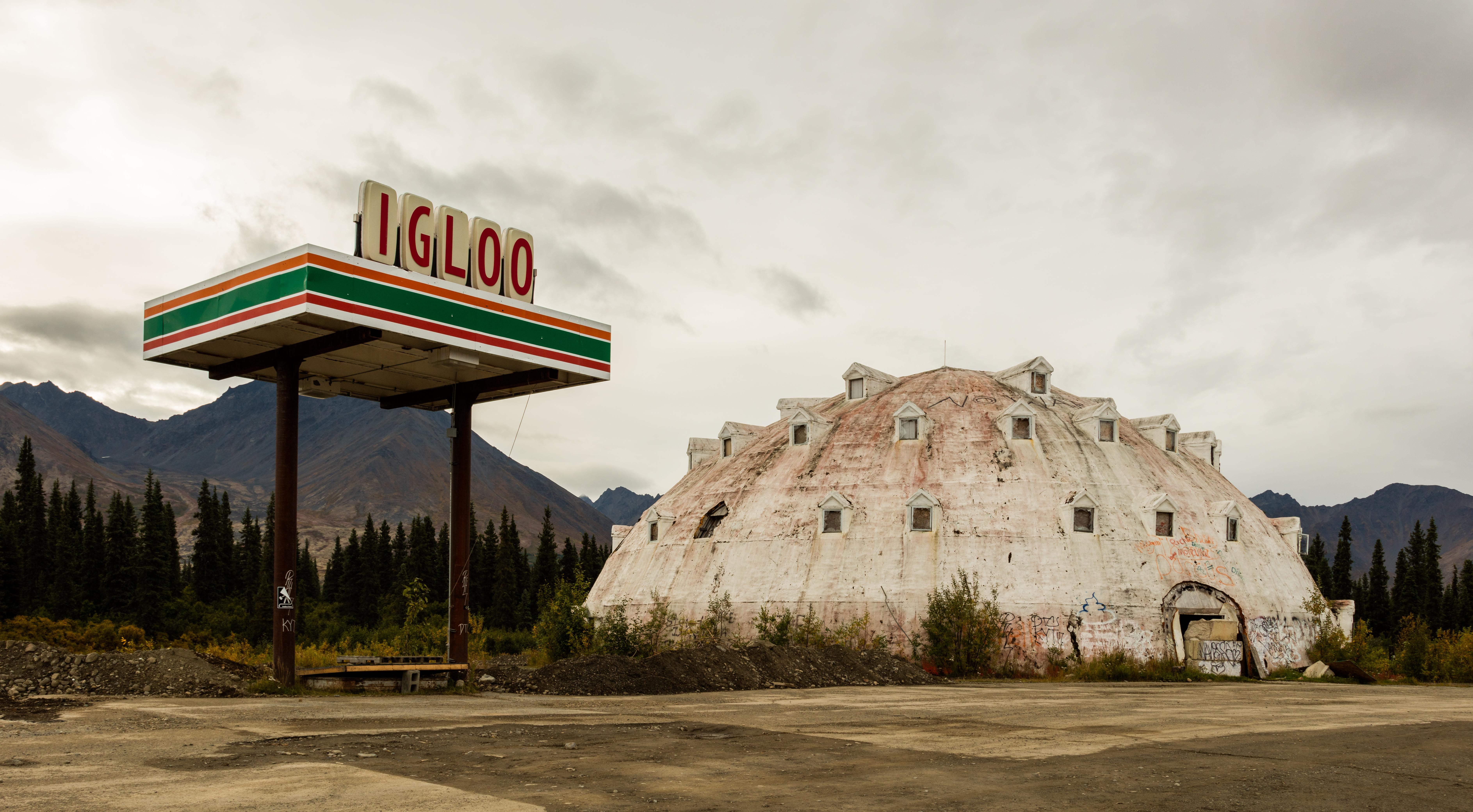
Built as a quirky roadside attraction along Alaska’s Parks Highway, the Igloo Hotel was an ambitious dream that never officially opened. The massive, domed structure was meant to draw travelers on their way to Denali National Park, but financial and permit issues left it abandoned. Today, the icy Alaskan winds whistle through its hollow interiors, and snowdrifts pile against its walls, making it feel like a forgotten relic of a different world.
10.Sanatorio Durán – Costa Rica

Originally built as a tuberculosis hospital in the early 20th century, Sanatorio Durán was later repurposed into a hotel before being abandoned altogether. High in the misty hills of Cartago, it now stands as a ghostly ruin, covered in moss and graffiti. The damp corridors and decaying rooms have led to rumors of paranormal activity, but even skeptics can’t deny the haunting beauty of nature reclaiming this eerie structure.
11.Maya Hotel – India
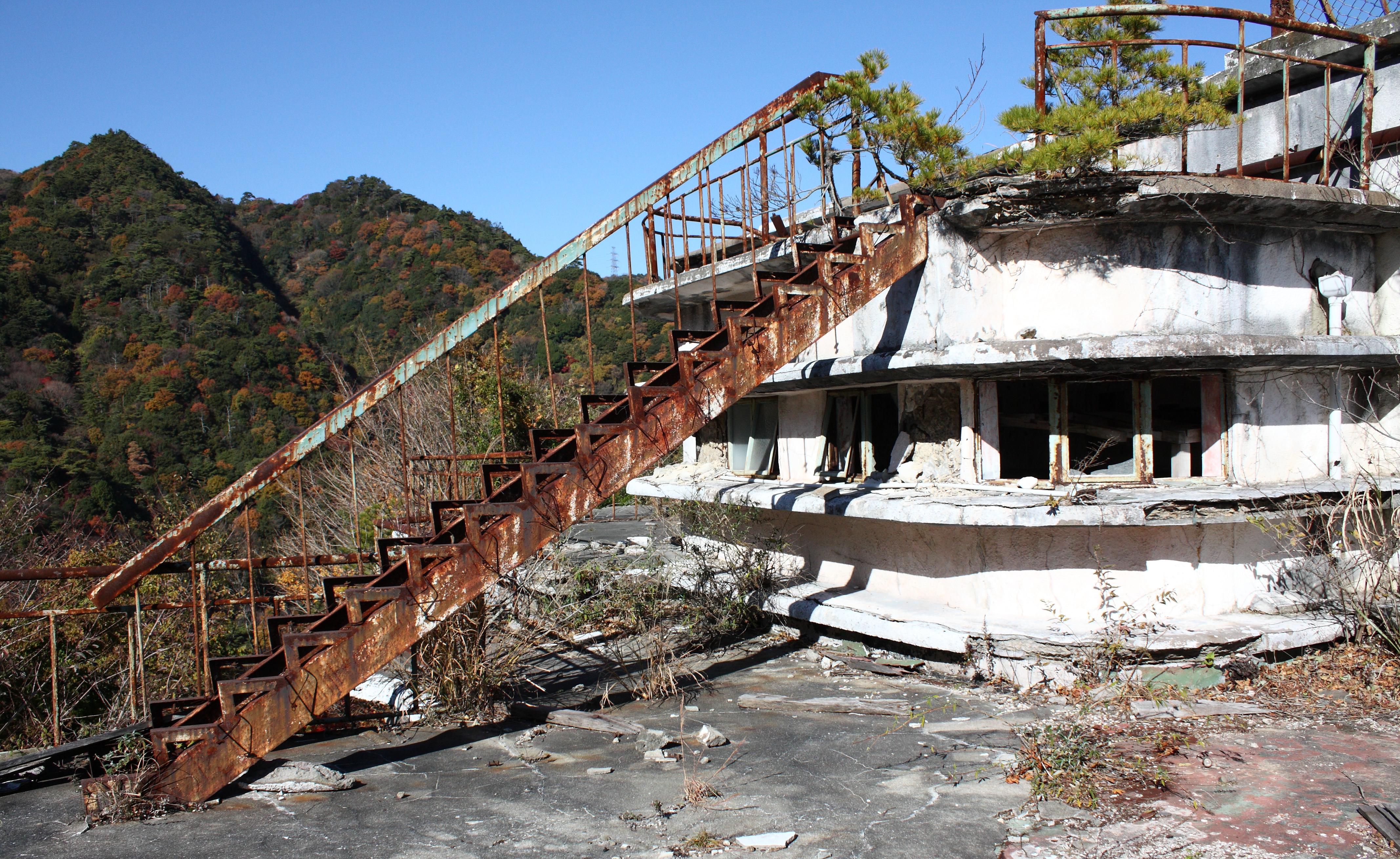
Hidden in the jungles of India, the Maya Hotel was designed as a luxurious retreat but was abandoned before ever opening. The reasons remain murky—some say financial mismanagement, others whisper of bad luck—but today, the dense jungle has woven itself through the empty rooms. Monkeys swing through the skeletal remains of balconies, and the roots of ancient trees crack through marble floors, making it a stunning, surreal landscape of nature’s quiet victory.
12. Grand Hotel Kupari – Croatia
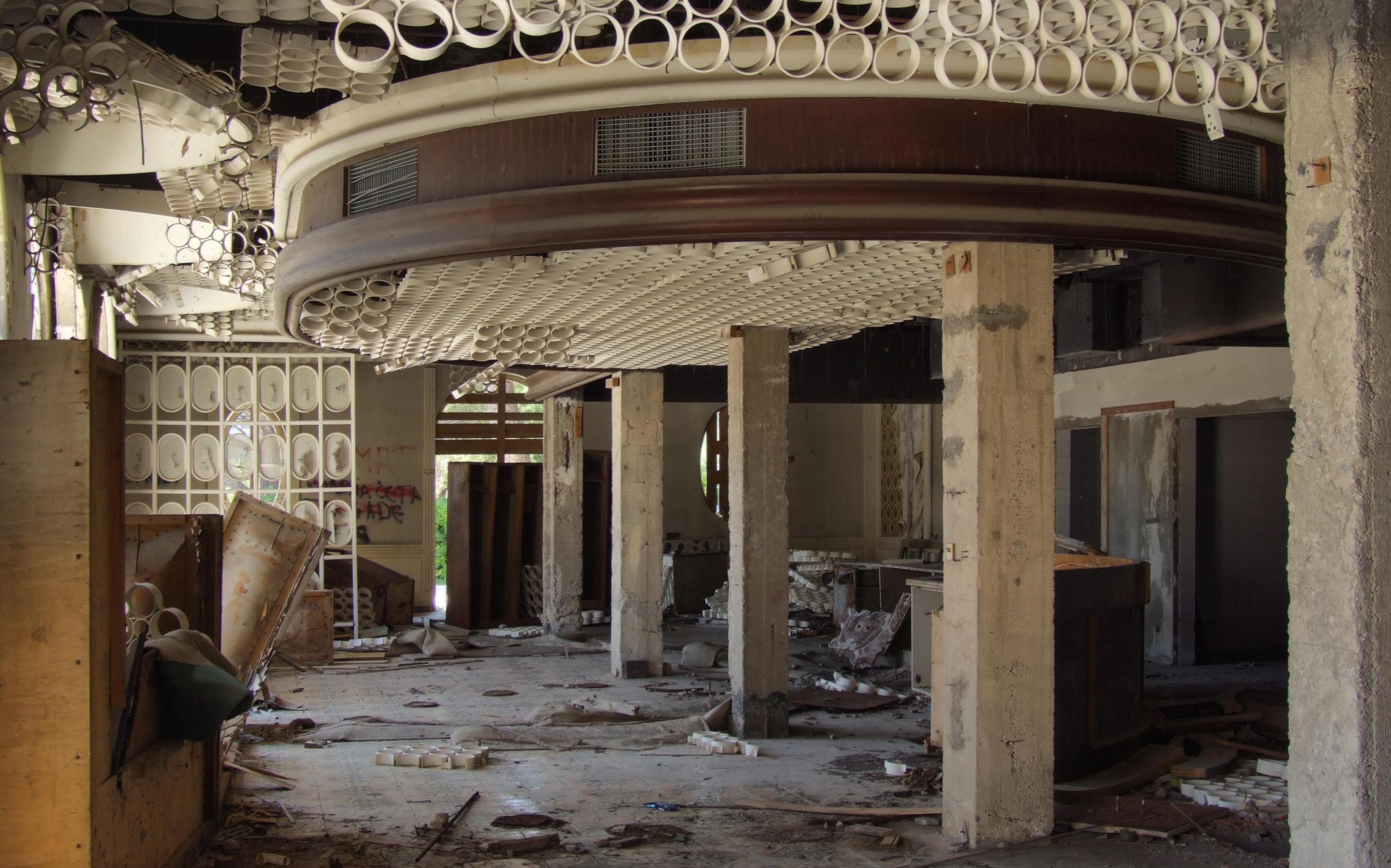
Once a playground for Yugoslav royalty, the Grand Hotel Kupari was part of a lavish resort destroyed during the Croatian War of Independence in the 1990s. Though the war left its walls riddled with bullet holes, the Adriatic breeze still sweeps through its once-opulent corridors. Wildflowers sprout from cracks in the marble, and vines snake through shattered windows, turning this seaside ruin into a breathtaking mix of history and rebirth.
13. Bokor Palace Hotel – Cambodia

Perched high on a mist-shrouded plateau in Cambodia’s Bokor National Park, the Bokor Palace Hotel was once a lavish retreat for French colonial elites in the 1920s. Built to provide an escape from the sweltering heat of Phnom Penh, this grand resort embodied European luxury, complete with a casino and ballroom. However, its remote location also made it a strategic military outpost, leading to multiple periods of abandonment due to war and political upheaval. It fell silent during the Khmer Rouge era, serving as a battleground, and even today, its bullet-riddled walls and crumbling staircases tell the story of its violent past. The surrounding mist adds an otherworldly atmosphere, as if the spirits of former guests still linger in the decayed halls. Though portions of the hotel have been restored in recent years, much of its original grandeur remains lost to time, standing as a haunting relic of Cambodia’s turbulent history.
14. El Hotel Viena – Argentina
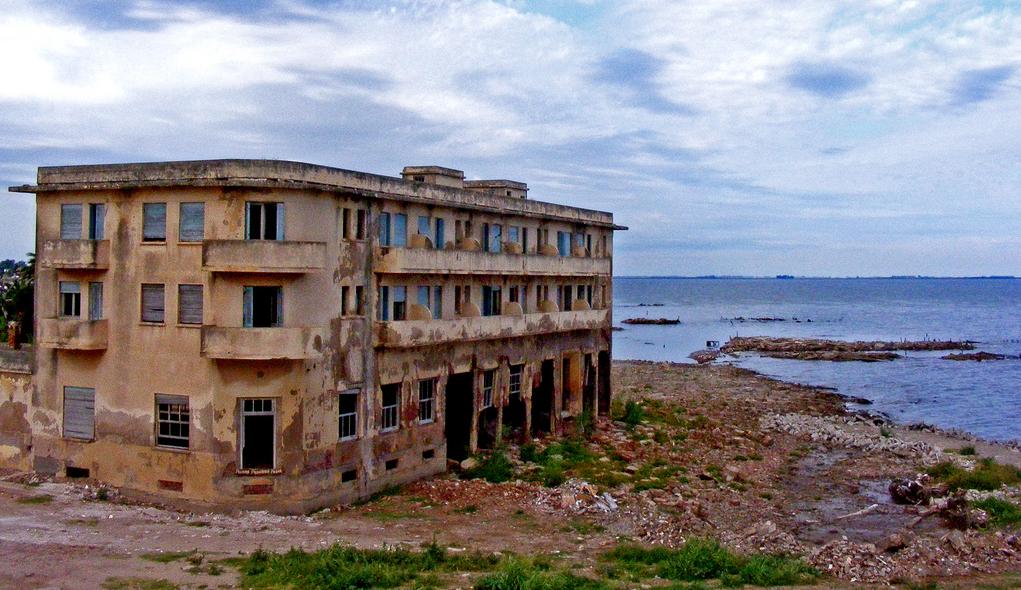
Built in the 1940s by German immigrants, El Hotel Viena sits on the shores of Mar Chiquita, one of Argentina’s largest saltwater lakes. While it was initially a luxurious retreat for wealthy vacationers, it soon became infamous due to rumors that it provided refuge for Nazi war criminals fleeing Europe after World War II. Whispers of hidden tunnels, secret passages, and long-forgotten safes fuel speculation that the hotel was more than just a lakeside getaway. Over the years, the hotel fell into disrepair, with economic downturns and rising water levels from the lake hastening its demise. Today, its decaying facade and partially flooded rooms create an eerie scene, while ghost hunters and urban explorers report strange noises and unexplained phenomena within its empty corridors. Whether fact or fiction, its dark past and ghostly presence make it one of the most haunting abandoned hotels in South America.
15. Ryugyong Hotel – North Korea
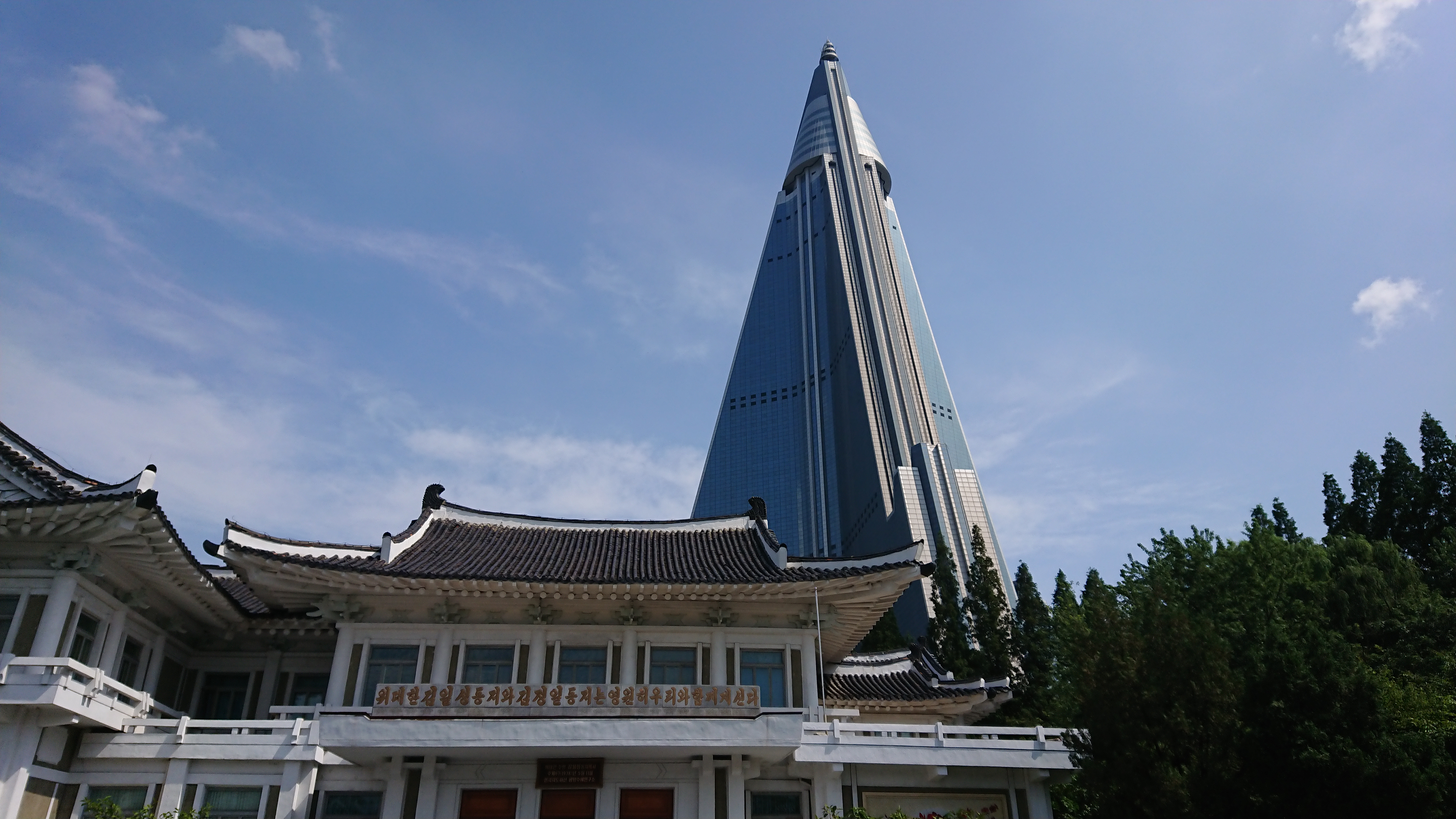
Towering over Pyongyang like a ghostly pyramid, the Ryugyong Hotel is one of the most infamous abandoned hotels in the world. Construction began in 1987, with plans to create a futuristic, 105-story luxury hotel that would showcase North Korea’s grandeur. However, financial struggles, political turmoil, and engineering challenges stalled the project. Despite sporadic attempts to complete it, the hotel has never officially opened. Its dark, glassy exterior looms eerily over the skyline, earning it nicknames like "The Hotel of Doom." Though its structure is technically intact, the interior remains unfinished—an empty shell of grand ambitions left to decay in silence.
16. The Dunlop House – Scotland
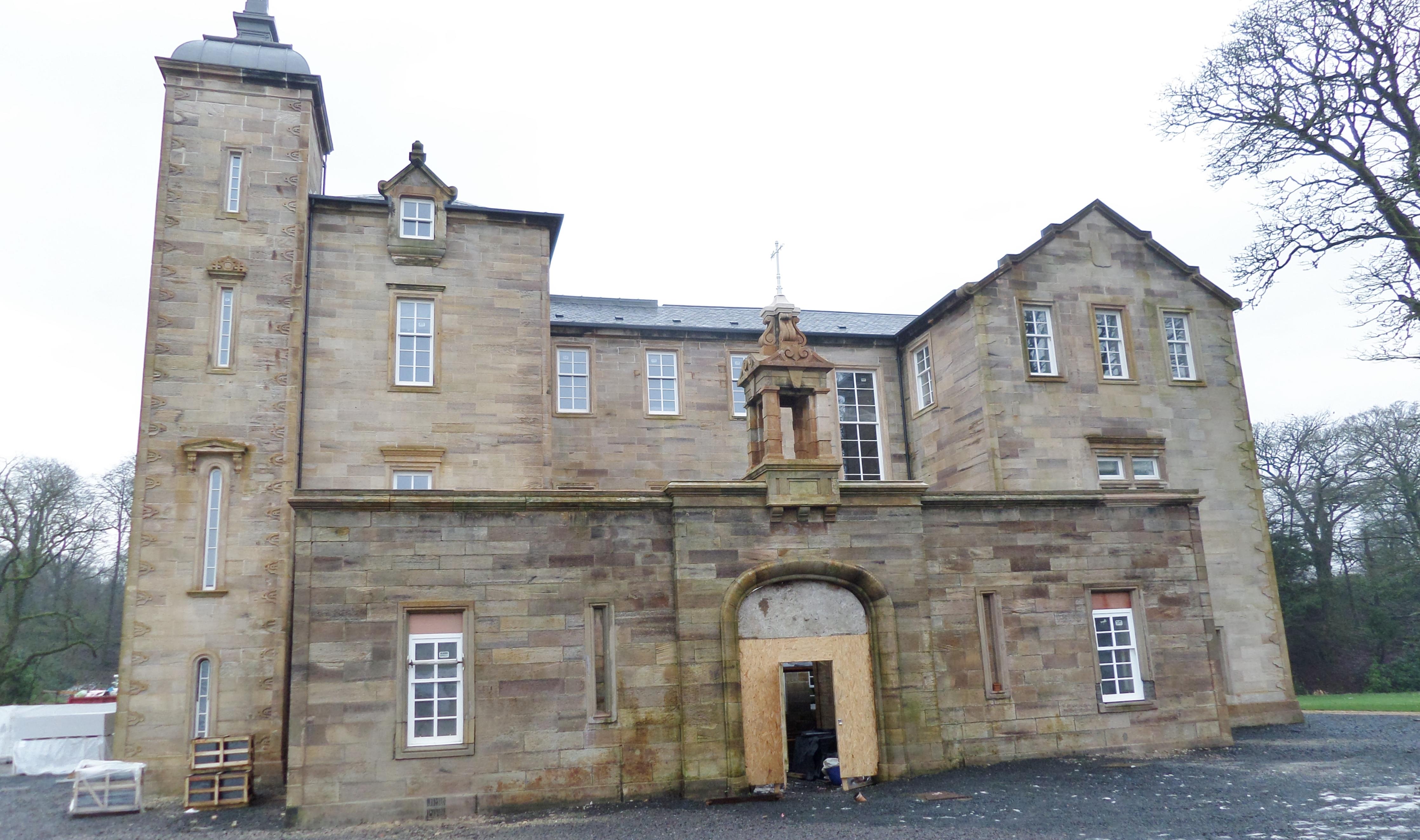
Nestled in the rolling hills of Scotland, this Victorian-era mansion-turned-boutique-hotel was once a prestigious country retreat for the elite. Its ivy-clad stone walls, grand staircases, and stately architecture made it a sought-after destination for travelers seeking a taste of old-world luxury. However, after facing financial troubles in the 1990s, the Dunlop House was shuttered, leaving behind a beautifully eerie estate frozen in time. Thick fog often rolls in from the surrounding moors, lending it an almost supernatural aura, and locals whisper of strange occurrences within its abandoned halls. Many claim to have seen ghostly figures in the windows or heard faint echoes of long-forgotten conversations drifting through the empty corridors. Unlike many abandoned hotels that succumb to vandalism, the Dunlop House remains surprisingly intact, with furniture, chandeliers, and even dusty guest registers still in place—creating the unsettling illusion that the last guests simply vanished overnight.
17. Hotel Polissya – Ukraine
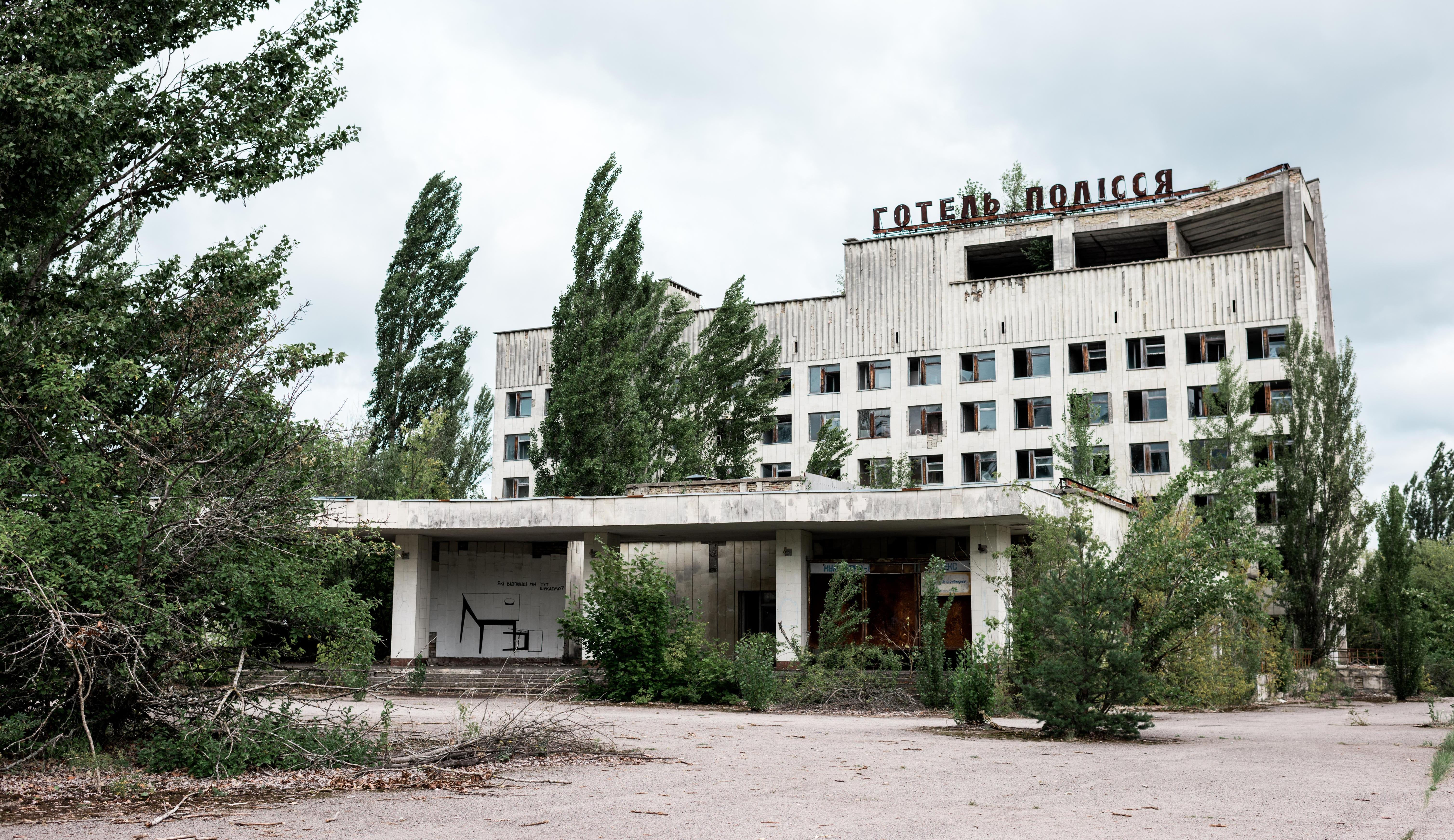
Standing as a towering skeleton above the ghost town of Pripyat, Hotel Polissya was once one of the most prestigious hotels in the Soviet Union, catering to high-ranking officials and engineers working at the nearby Chernobyl Nuclear Power Plant. Designed in the brutalist architectural style of the era, it was meant to symbolize progress and Soviet prosperity. However, the 1986 Chernobyl disaster changed everything. When the explosion occurred, Pripyat’s 50,000 residents were forced to evacuate within hours, leaving behind a city frozen in time—including the hotel, which still has beds, furniture, and even Soviet-era propaganda posters eerily intact. Today, its skeletal frame looms over the decaying city, its empty rooms offering haunting views of the desolate Exclusion Zone below. The rooftop, once a lively vantage point for guests to admire the surrounding landscape, is now a desolate perch for the occasional urban explorer. Hotel Polissya remains one of the most infamous abandoned hotels in the world, a chilling reminder of humanity’s hubris and the devastating power of nuclear catastrophe.
18. Hotel Belvédère – Switzerland
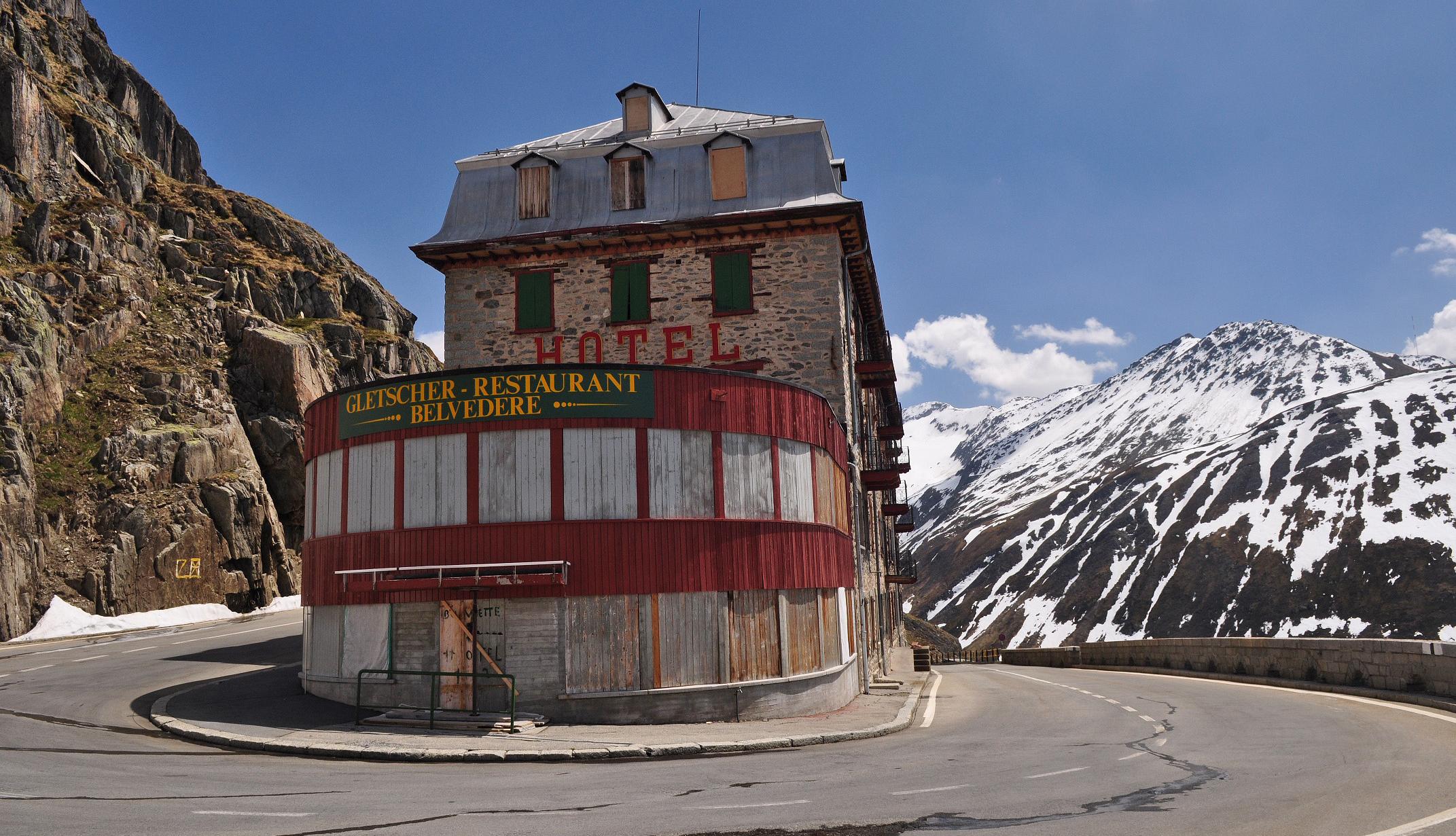
Perched along the dramatic curves of the Furka Pass, one of Switzerland’s most breathtaking mountain roads, Hotel Belvédère was once a jewel of Alpine hospitality. Built in the late 19th century, it offered weary travelers a place to rest while marveling at the Rhône Glacier, which lay just beyond its doorstep. For decades, guests from around the world—including royalty and celebrities—visited this iconic retreat to experience the untouched beauty of the Swiss Alps. However, as climate change took its toll, the Rhône Glacier began to recede at an alarming rate, drastically altering the once-dramatic scenery. With fewer tourists making the journey and the landscape changing beyond recognition, the hotel was forced to close its doors in 2016. Today, the abandoned structure remains a melancholic monument to environmental change, its shuttered windows staring out at a landscape that no longer resembles the one it was built to showcase. Though the road leading to it still welcomes adventurous drivers, the silence that now fills the hotel’s empty rooms speaks volumes about the fragile balance between nature and human ambition.
19. Hotel Rosita – Cuba
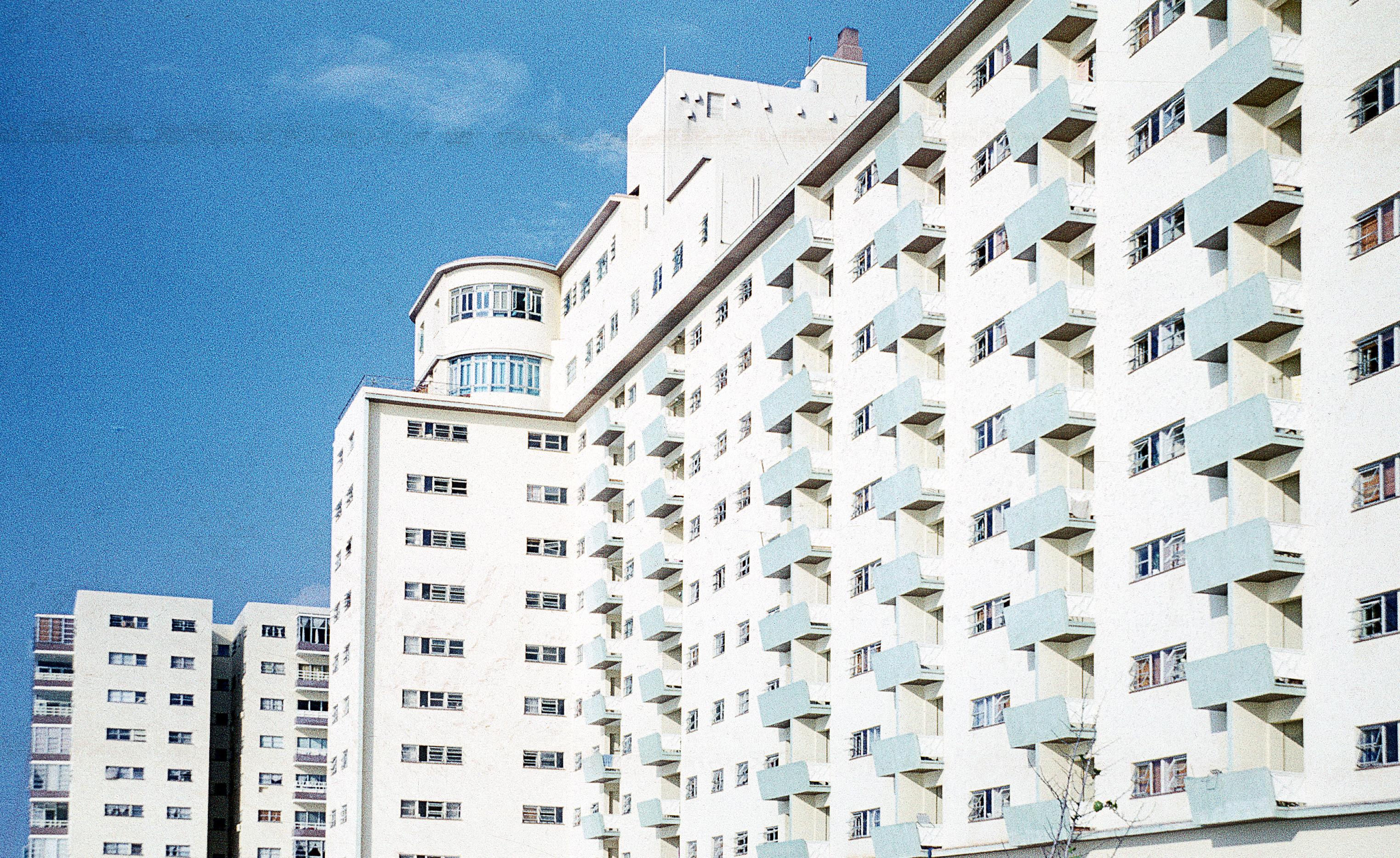
The Grand Hotel Pupp in the Czech spa town of Karlovy Vary is world-famous, even serving as inspiration for The Grand Budapest Hotel. However, few know that an annex of the hotel has been left abandoned for decades. While the main hotel continues to host luxury guests, the unused wing, once reserved for European aristocrats and high-ranking officials, has been left to decay. Ornate staircases, dusty chandeliers, and peeling wallpaper give the annex an eerie, forgotten beauty. Hidden from the eyes of most tourists, this once-opulent section of the hotel remains a haunting relic of Karlovy Vary’s golden age.
20. Casa Vieja – The Ghost Hotel of Goa, India

Hidden among the palm-lined beaches of Agonda, Goa, Casa Vieja, also known as the Ghost Hotel, stands as one of India’s most mysterious and eerie abandoned structures. Originally intended to be a luxurious beachside resort, this sprawling complex was left unfinished under circumstances shrouded in speculation. Some say financial difficulties halted construction, while others whisper of bad luck, legal troubles, or even supernatural forces at play. Now, nature has begun reclaiming the skeletal remains of what was supposed to be a high-end retreat. Crumbling walls, overgrown courtyards, and dark, empty hallways give the site an unmistakably haunted feel. Graffiti covers parts of the unfinished buildings, and locals often avoid the area at night, citing ghostly apparitions and strange noises echoing through the ruins. Despite its eerie reputation, urban explorers and curious travelers continue to visit, drawn by the site’s haunting beauty and chilling history. Casa Vieja remains one of Goa’s most intriguing abandoned landmarks, a silent monument to a dream that was never realized.
21. The Baker Hotel – Mineral Wells, Texas, USA
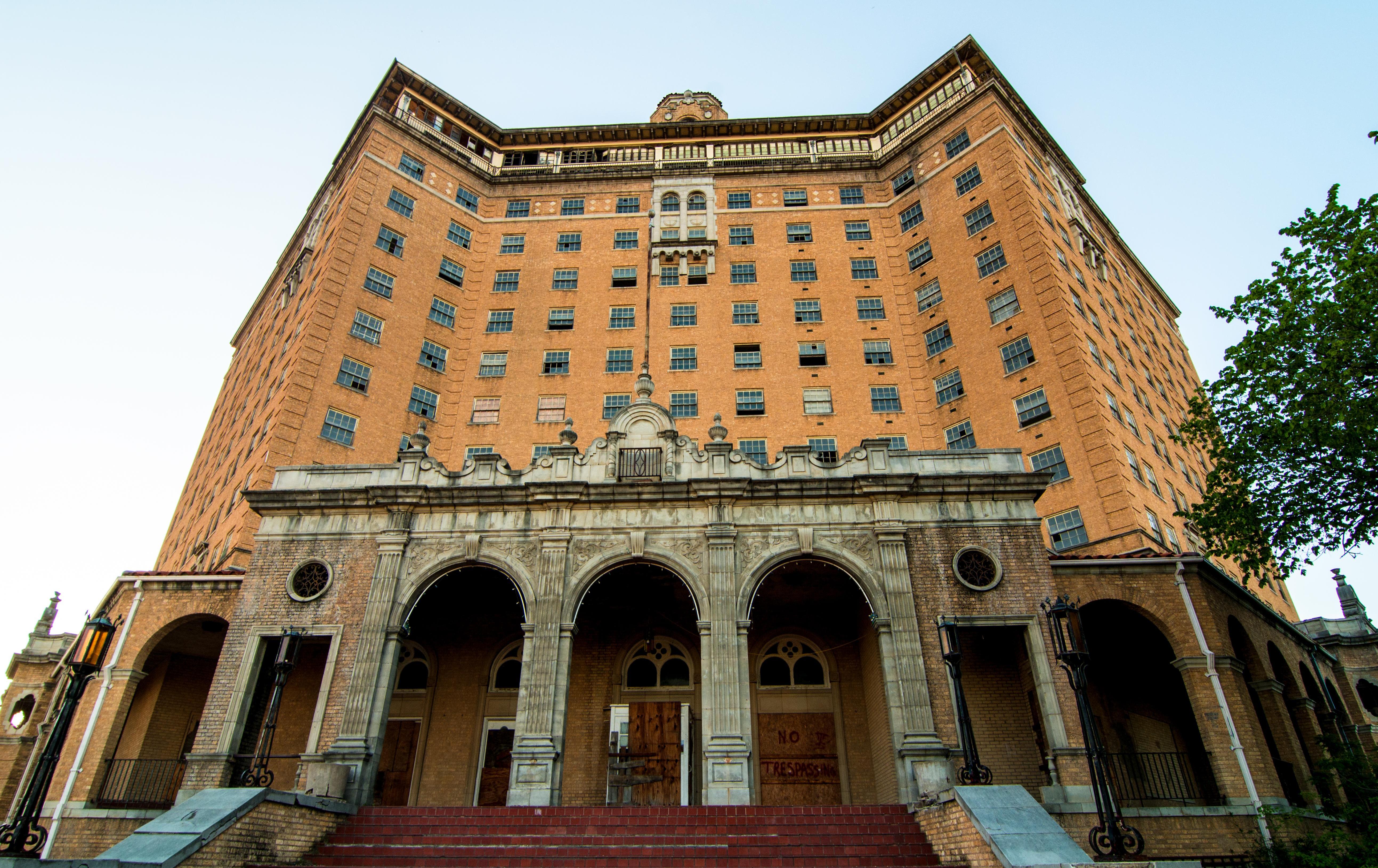
The Baker Hotel, located in Mineral Wells, Texas, opened in 1929 and quickly became a renowned wellness destination, attracting celebrities and political figures who sought the healing properties of the local mineral waters. The 14-story hotel featured 450 rooms, a lavish spa, and opulent ballrooms, epitomizing luxury of the era. However, with the decline in popularity of mineral spas and the economic downturns, the hotel struggled to maintain its grandeur and eventually closed in 1972. Since then, it has stood as a haunting relic of a bygone era, with its imposing structure casting long shadows over the town. Efforts to restore the hotel have been discussed over the years, but as of now, it remains in a state of arrested decay. Photographs of The Baker Hotel showcase its enduring architecture and the faded elegance that continues to captivate the imagination of those who pass by.
22. The Penn Hills Resort – USA
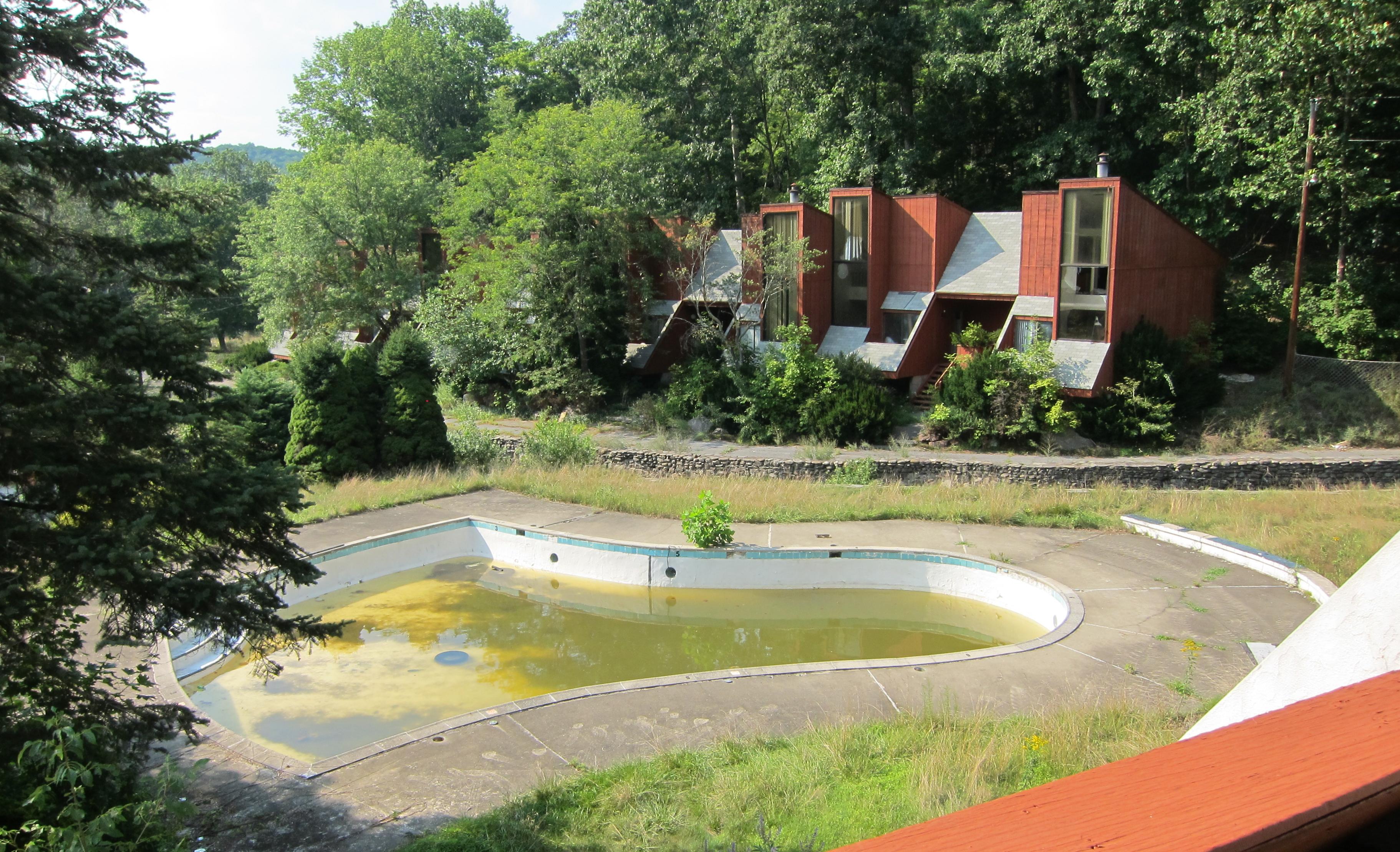
Tucked away in the Pocono Mountains of Pennsylvania, Penn Hills Resort was once a legendary honeymoon destination, an over-the-top retreat known for its kitschy romance and unapologetic indulgence. Opened in 1944, it catered to newlyweds with heart-shaped bathtubs, mirrored ceilings, and love-themed decor straight out of a retro dream. The resort flourished during the golden age of American travel, when couples flocked to the Poconos for weekend getaways filled with dancing, tennis, and champagne toasts. However, as travel trends changed and the era of roadside romance faded, the resort struggled to stay relevant. By the early 2000s, its outdated charm was no longer enough to attract guests, and financial troubles led to its permanent closure in 2009. Left to the elements, the once-vibrant resort quickly fell into disrepair. Today, its once-colorful interiors are coated in layers of dust and decay, its famous red-heart bathtubs sit cracked and empty, and graffiti covers the remains of its once-bustling dance halls. The contrast between its bold, romantic past and its eerie, desolate present makes it one of the most fascinating abandoned hotels in the United States—a place where love once flourished but now only silence remains.
23. Hotel Campo Imperatore – Italy
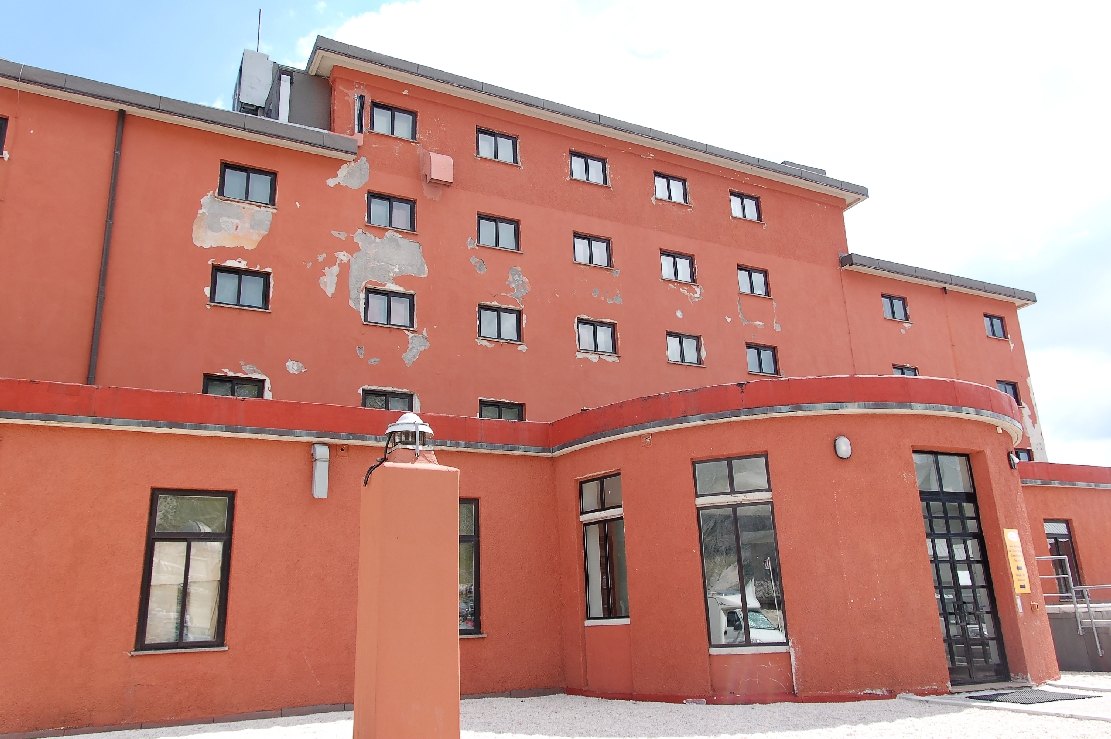
Perched atop the barren plateau of Campo Imperatore in the Apennine Mountains, this remote hotel sits at nearly 7,000 feet above sea level and holds an eerie place in modern European history. Built in the 1930s, the hotel gained global notoriety in 1943 when Italian dictator Benito Mussolini was imprisoned here following his ousting. It was also the site of the daring Gran Sasso raid, when German commandos rescued him in a covert mountaintop operation. While parts of the hotel remain operational during ski season, vast sections have been left to quietly decay under layers of snow and fog. The façade is cracked and faded, with rusted balconies overlooking a stark, wind-whipped landscape. Inside, peeling wallpaper and locked wings echo with the weight of its political past. Visitors come not only for the sweeping alpine views, but also to walk through corridors where history took a dark turn—where time and memory still hang heavy in the thin mountain air.
24. Grand Hotel de l’Europe – Austria
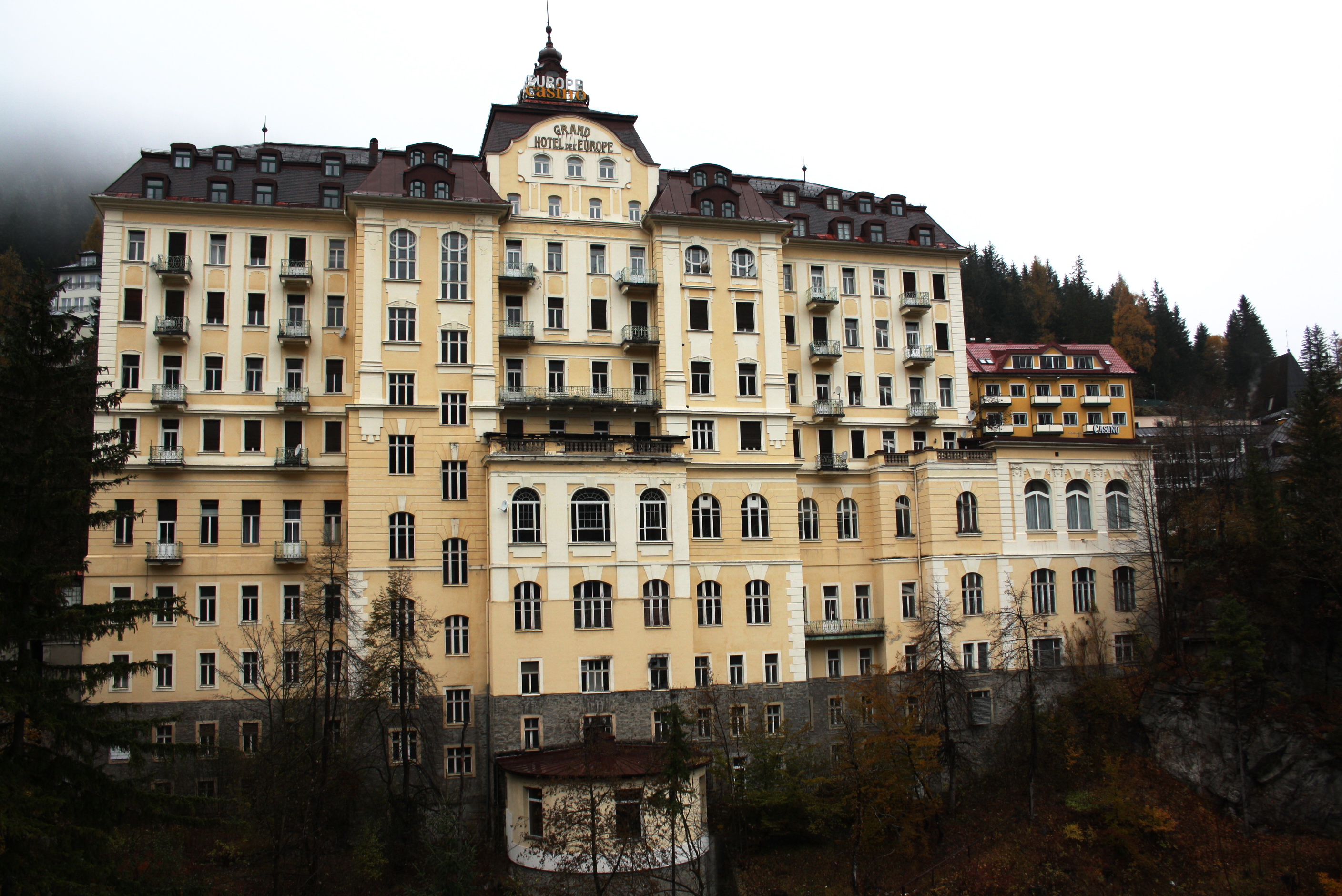
Once a crown jewel of the Austrian Alps, the Grand Hotel de l’Europe in Bad Gastein was the epitome of elegance when it opened in the early 20th century. Built during the golden age of railway tourism, it catered to aristocrats, artists, and royals who came to bathe in the nearby thermal springs. The Belle Époque architecture, with its sweeping staircases and gilded ballrooms, reflected a time of leisure and grandeur. But as war and economic shifts took their toll, the railway stopped bringing crowds, and the glittering resort slipped into quiet decline. Today, while some areas are used seasonally, much of the hotel sits in haunting silence. Velvet drapes hang heavy with dust, while once-lavish furnishings crumble under layers of decay. Tarnished chandeliers sway gently in the mountain breeze that leaks through cracked windows. It's a majestic ruin—frozen in time, and all the more beautiful for its faded glory.
25. Hotel Intourist – Georgia (Tbilisi)
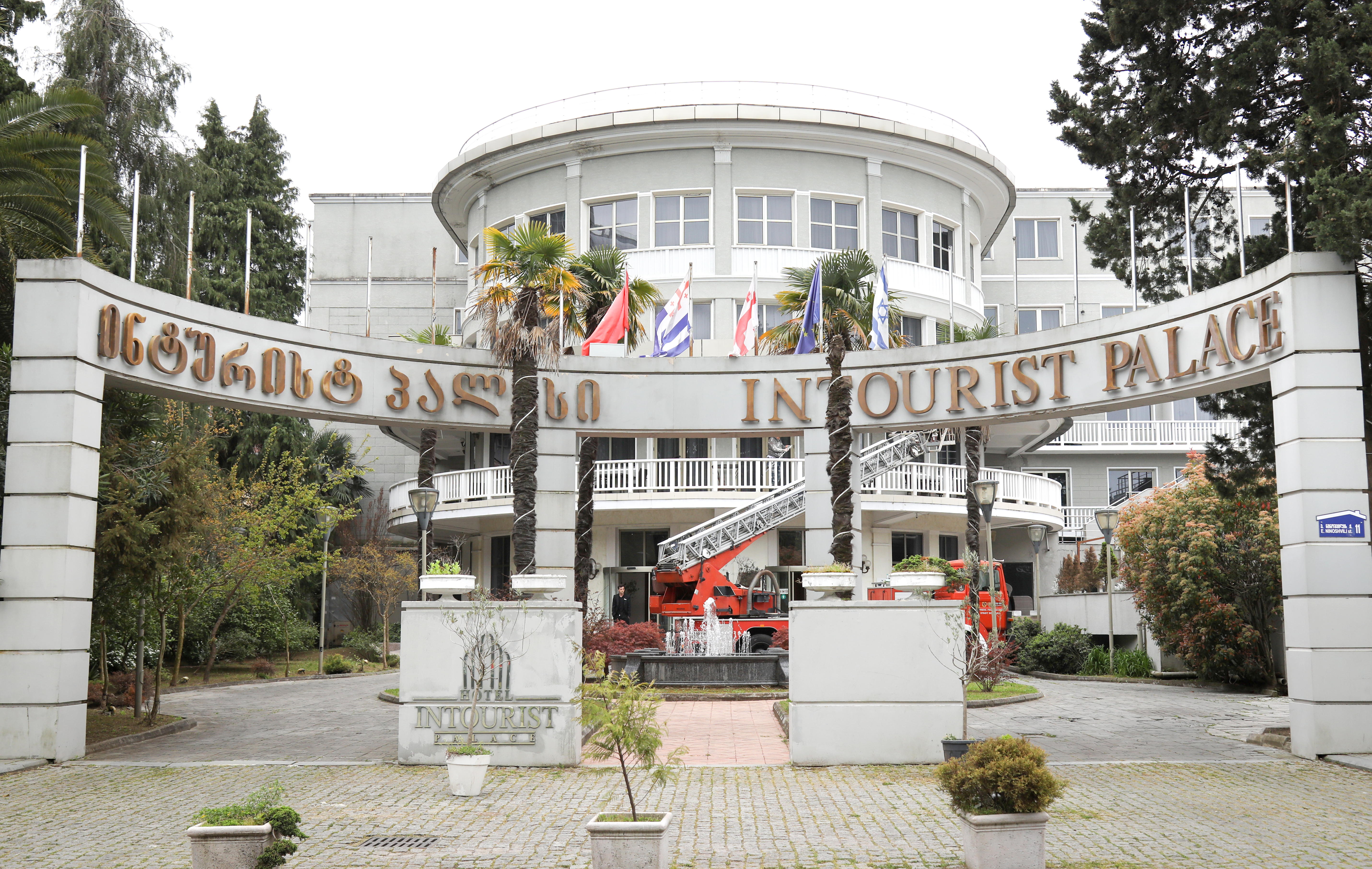
The Hotel Intourist in Tbilisi once stood as a symbol of Soviet modernity and political prestige. Built in the 1930s and expanded during the Cold War era, it hosted high-ranking officials, international diplomats, and even foreign journalists permitted to glimpse behind the Iron Curtain. Its stark, monolithic exterior and massive marble lobby epitomized Soviet-era ambition. But after the fall of the USSR, the once-glamorous hotel was left adrift. Political instability and economic transition took their toll, and the building was gradually forgotten. Today, the skeletal structure looms over Tbilisi like a relic of a vanished empire. Inside, dusty red carpets muffle the footsteps of urban explorers who marvel at crumbling murals, long-dead potted palms, and flickering remnants of propaganda posters. Time stands still in these hollow halls—preserving a mood of silent tension and Cold War mystique. The Hotel Intourist is not just abandoned—it’s entombed in history.
26. Hotel Casino Constanta – Romania
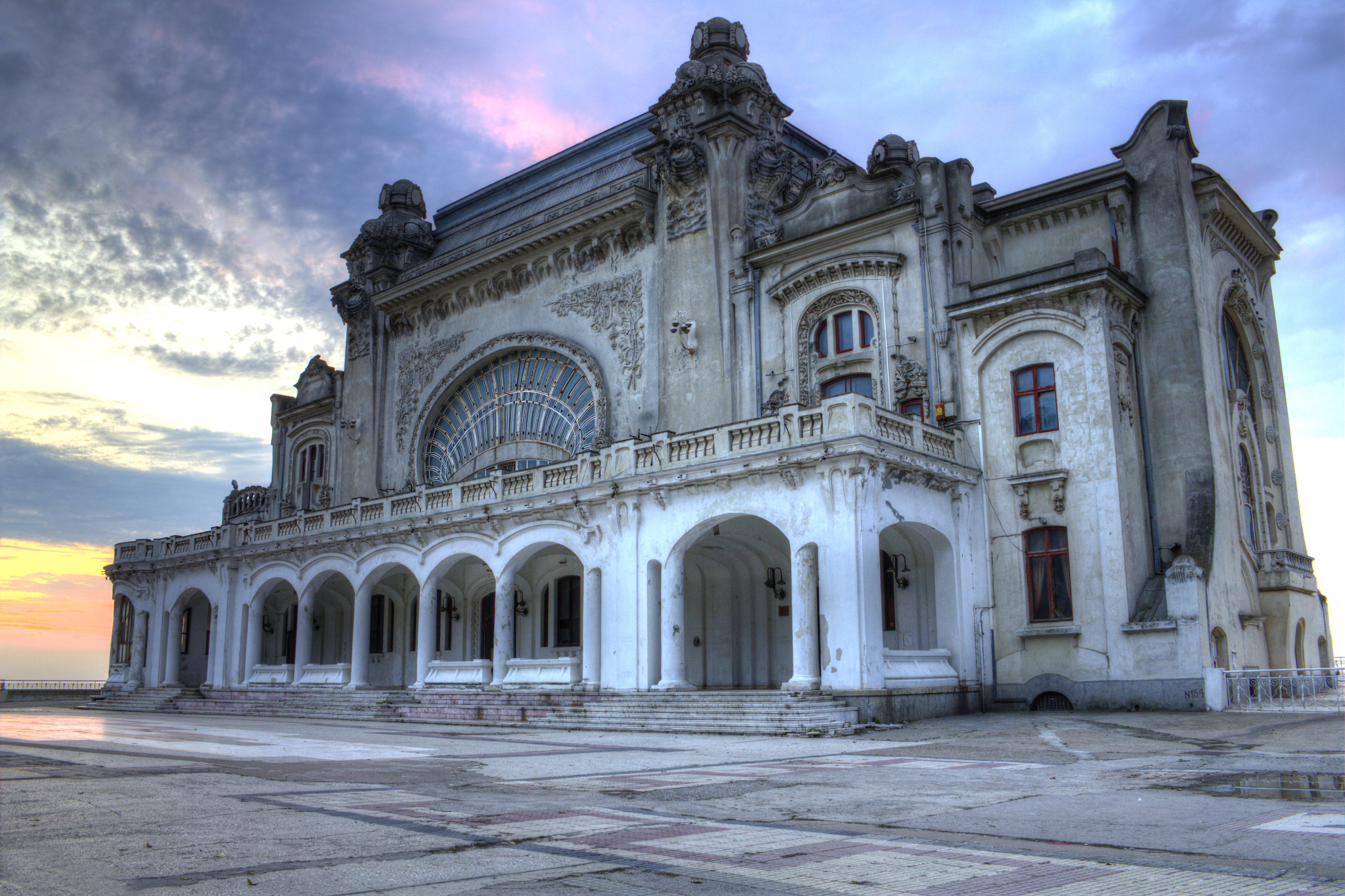
With its sweeping arches, ornate façades, and dramatic cliffside location, the Hotel Casino Constanța was once the crown jewel of Romania’s coastline. Built in 1910 in the Art Nouveau style, it became a glittering destination for royalty, high society, and glamorous tourists looking to dance, dine, and gamble beside the Black Sea. For decades, it stood as a symbol of Romania’s elegance and cosmopolitan allure. But wars, communism, and neglect wore down the building’s luster. After years of abandonment, the sea air has taken its toll: stained glass windows are shattered, sea spray corrodes wrought-iron railings, and salt winds whistle through cracked domes. The grand central staircase now leads to nowhere, and faded murals peel from damp walls. Despite its decay, the structure remains achingly beautiful—a gothic daydream caught between the tides of time and memory. A long-promised restoration has yet to materialize, leaving this seaside palace in a state of suspended, poetic ruin.
27. Hotel Panorama – Czech Republic

Tucked deep in the Jeseníky Mountains, Hotel Panorama looks more like a grounded spacecraft than a traditional hotel. Built during the 1980s, its futuristic design—with wide saucer-like wings and sharply angled walls—was meant to showcase Communist Czechoslovakia’s modernity and vision. Intended as a luxury retreat for elite guests, the project was doomed by political upheaval and economic mismanagement during the Velvet Revolution. Today, this Cold War curio sits in eerie isolation. Its once-white concrete exterior is now cracked and moss-covered, and the geometric windows, designed to offer panoramic views of snowy peaks, are coated with grime. Trees have begun growing right up against the structure, encasing it in a forested cocoon. On foggy days, the entire hotel seems to vanish into the landscape—more myth than memory. For photographers and fans of retro-futurism, Hotel Panorama is a one-of-a-kind destination that feels like stepping into a forgotten sci-fi dystopia.
28. Hotel Haegumgang – North Korea (formerly Australia)
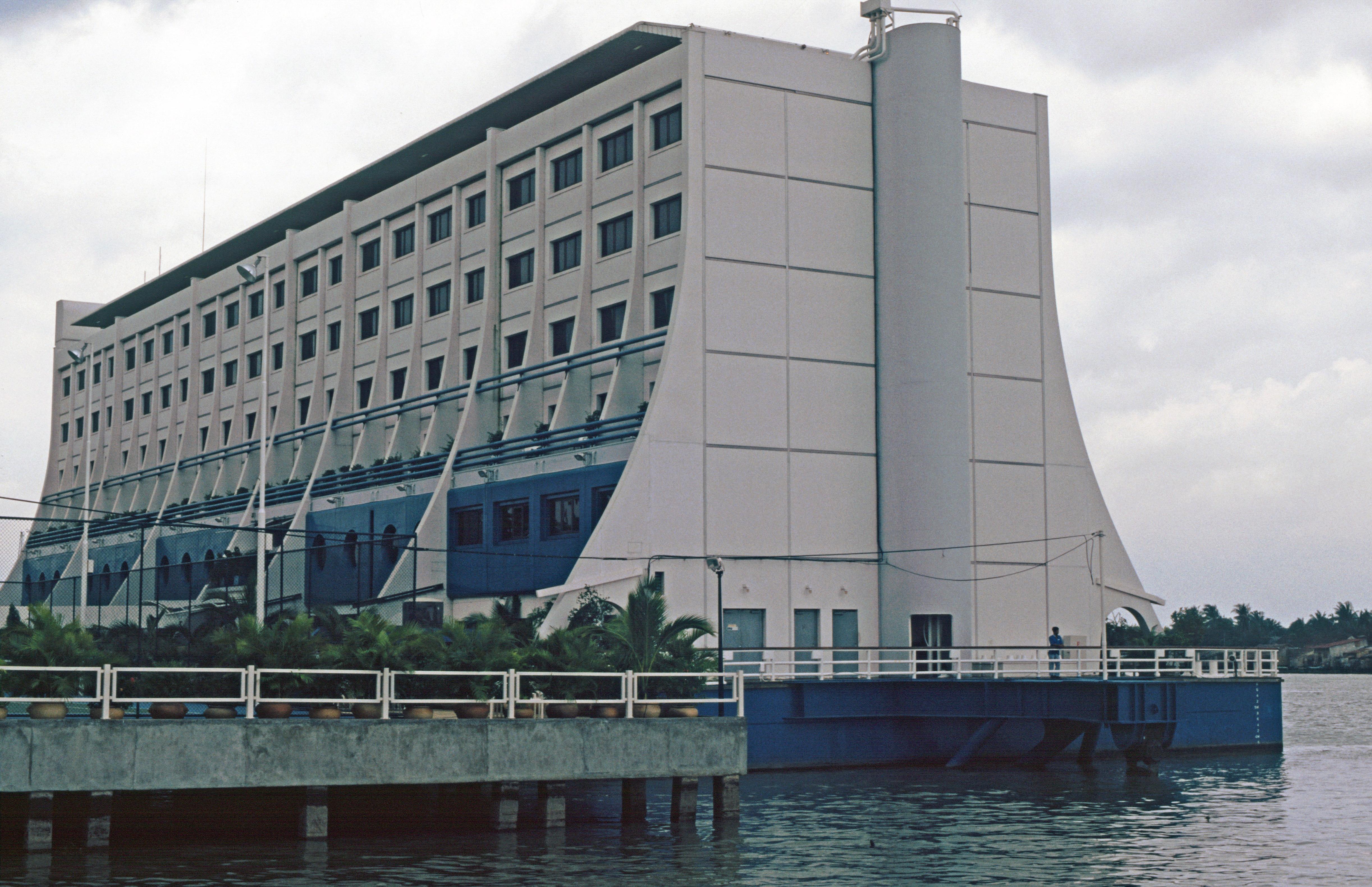
Originally built off the coast of Queensland, Australia in 1988, Hotel Haegumgang was the world’s first floating hotel—an ambitious experiment in offshore luxury. Shaped like a cruise liner but permanently moored, it featured restaurants, bars, saunas, and 200 rooms, all bobbing above the Coral Sea. Despite its novelty, the concept struggled financially and was sold and relocated to Vietnam, and then again to North Korea as part of a short-lived tourism venture with South Korea. Today, the hotel rests eerily on the coast of Mount Kumgang—abandoned, rusting, and fenced off from the public. Its faded paint peels in the salty air, and barnacles cling to the lower hull. Windows are dark, corridors empty, and the dream of a floating paradise has become a ghost ship marooned by failed diplomacy and political tensions. For decades, it changed hands and countries—but never found a permanent home. Now it floats in silence, a monument to ambition unmoored.
29. Ducor Hotel – Monrovia, Liberia: Overlooking the Atlantic in Silence

Once the shining jewel of West African hospitality, the Ducor Hotel in Monrovia opened its doors in 1960 as a symbol of post-independence optimism and luxury. Positioned dramatically atop Ducor Hill, the hotel offered panoramic views of the Atlantic Ocean, the city of Monrovia, and the sprawling port below. It boasted 106 rooms, a grand ballroom, fine dining, a swimming pool overlooking the ocean, and even a rooftop terrace where guests would sip cocktails as the sun dipped into the sea. It was one of the first international-class hotels in West Africa and quickly became a magnet for diplomats, heads of state, and celebrities. Notable guests included President Charles de Gaulle, Emperor Haile Selassie, and a stream of global elites who saw the hotel as a glamorous stop in a rising nation. The Ducor Hotel wasn’t just a place to stay—it was a national symbol of progress and pan-African pride. However, Liberia’s political and economic stability unraveled in the 1980s. The outbreak of civil war devastated the country, and by 1989, the hotel was shuttered and left to decay. Looters stripped away furnishings and fixtures, and soldiers were rumored to have taken up residence in the shell of the building during the conflict. Today, the structure still stands—graffitied, hollow, and overgrown—its empty corridors a haunting reflection of the country’s tumultuous journey.
30. Johannesburg Sun Hotel – Johannesburg, South Africa: A Twin-Tower Relic
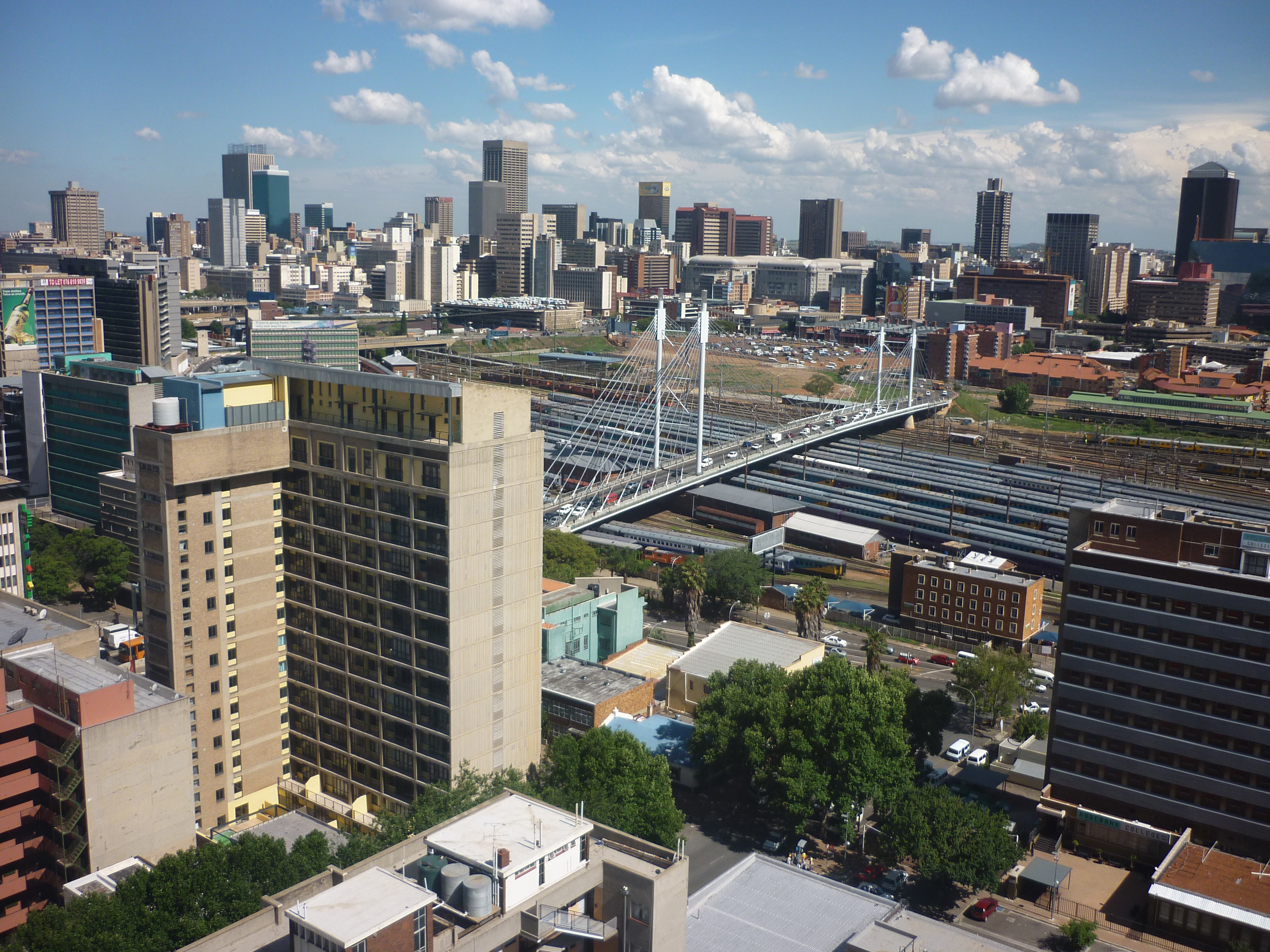
Rising from the heart of Johannesburg’s Central Business District, the Johannesburg Sun Hotel once reigned as a glittering emblem of luxury and modernity. Opened in the early 1980s, this massive five-star complex featured two sleek glass-and-steel towers—one 22 stories high and the other 30—connected by a sky bridge. With over 600 opulent rooms, lavish restaurants, rooftop swimming pools, conference halls, and even a heliport, the hotel was a striking architectural and cultural statement of South Africa’s economic aspirations during the final years of apartheid. It served international dignitaries, business elites, and tourists who flocked to experience Johannesburg’s financial boom. The Sun Hotel was more than a place to sleep—it was a hub of cosmopolitan nightlife and high-society gatherings, gleaming above the city's skyline as a beacon of prestige. But the 1990s brought dramatic changes. As apartheid ended, economic dynamics shifted and the CBD suffered from a rising wave of urban decay and crime. Businesses relocated to more secure suburbs, and the once-bustling area around the hotel emptied out. By 1998, with occupancy rates plummeting and maintenance costs soaring, the Johannesburg Sun shut its doors.
Lost in Time, Found by Nature

Each of these abandoned hotels tells a story—not just of opulence and ambition, but of the relentless passage of time. Once filled with the laughter of guests, the clinking of glasses, and the hum of luxury, they now stand silent, their grandeur crumbling beneath the weight of neglect and nature’s quiet reclamation. Some were victims of war, others of economic misfortune, and a few simply fell prey to changing travel trends. Yet, in their decay, they have found a strange new beauty—haunting, melancholic, and undeniably mesmerizing. Vines curl through shattered windows, ballrooms stand empty beneath collapsed chandeliers, and echoes of the past linger in dust-covered corridors. These forgotten landmarks serve as reminders of impermanence, where human dreams once soared, only to be swallowed by time. Whether eerie or enchanting, abandoned hotels are more than ruins—they are frozen moments, waiting for history’s next chapter to be written.








